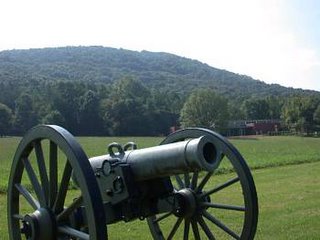Strike The Tent...
28 February 2006
Today in Civil War History
1864 Kilpatrick-Dahlgren raid begins
 Ulrich Dahlgren
Ulrich Dahlgren
 "Kill Cavalry" Kilpatrick
"Kill Cavalry" Kilpatrick
A major Union cavalry raid begins when General Hugh Judson Kilpatrick leads 3,500 troopers south from Stevensburg, Virginia. Aimed at Richmond, the raid sought to free Federal prisoners and spread word of President Lincoln's Proclamation of Amnesty and Reconstruction in hopes of convincing Confederates to lay down their arms.
The president's proclamation of December 1863 offered a pardon and restoration of property (except slaves, who were freed by the Emancipation Proclamation) to all Confederates. Kilpatrick took with him Colonel Ulrich Dahlgren to conduct the prisoner release while Kilpatrick covered him with the main force. To distract attention, Union infantry under General John Sedgwick and another cavalry detachment under General George Custer would feign an attack towards western Virginia.
The forces split after crossing the Rappahannock River. Kilpatrick began tearing up the Virginia Central Railroad while Dahlgren approached Richmond from the west. They were to rendezvous on the outskirts of Richmond. Kilpatrick arrived there on March 1 with General Wade Hampton's cavalry in hot pursuit. Dahlgren was delayed when a black guide led him to a deep section of the James River. Finding no possibility to cross, Dahlgren hung the guide on the spot. Kilpatrick had to leave for the north before Dahlgren's arrival, so Dahlgren and his men were cut off. The colonel and about 100 of his men were ambushed as they tried to rejoin Kilpatrick. Dahlgren was killed, and his body fell into Confederate hands. He was allegedly carrying papers that included instructions to burn Richmond and kill Confederate President Jefferson Davis and his cabinet. The papers were published in the Richmond Daily Examiner, but it is not clear where the orders had come from or if they were even authentic. Some historians have suggested that they were forged by the Confederates to stir morale in Virginia.
Kilpatrick suffered about 335 men killed, captured, or wounded. The raid accomplished little for the Union and the Confederate victory lifted southern morale.
 Ulrich Dahlgren
Ulrich Dahlgren "Kill Cavalry" Kilpatrick
"Kill Cavalry" KilpatrickA major Union cavalry raid begins when General Hugh Judson Kilpatrick leads 3,500 troopers south from Stevensburg, Virginia. Aimed at Richmond, the raid sought to free Federal prisoners and spread word of President Lincoln's Proclamation of Amnesty and Reconstruction in hopes of convincing Confederates to lay down their arms.
The president's proclamation of December 1863 offered a pardon and restoration of property (except slaves, who were freed by the Emancipation Proclamation) to all Confederates. Kilpatrick took with him Colonel Ulrich Dahlgren to conduct the prisoner release while Kilpatrick covered him with the main force. To distract attention, Union infantry under General John Sedgwick and another cavalry detachment under General George Custer would feign an attack towards western Virginia.
The forces split after crossing the Rappahannock River. Kilpatrick began tearing up the Virginia Central Railroad while Dahlgren approached Richmond from the west. They were to rendezvous on the outskirts of Richmond. Kilpatrick arrived there on March 1 with General Wade Hampton's cavalry in hot pursuit. Dahlgren was delayed when a black guide led him to a deep section of the James River. Finding no possibility to cross, Dahlgren hung the guide on the spot. Kilpatrick had to leave for the north before Dahlgren's arrival, so Dahlgren and his men were cut off. The colonel and about 100 of his men were ambushed as they tried to rejoin Kilpatrick. Dahlgren was killed, and his body fell into Confederate hands. He was allegedly carrying papers that included instructions to burn Richmond and kill Confederate President Jefferson Davis and his cabinet. The papers were published in the Richmond Daily Examiner, but it is not clear where the orders had come from or if they were even authentic. Some historians have suggested that they were forged by the Confederates to stir morale in Virginia.
Kilpatrick suffered about 335 men killed, captured, or wounded. The raid accomplished little for the Union and the Confederate victory lifted southern morale.
27 February 2006
Today in Civil War History
1864 Federal prisoners begin arriving at Andersonville
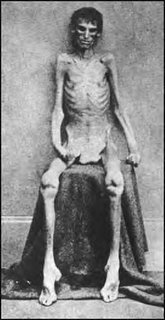
The first Union prisoners begin arriving at Andersonville prison, which was still under construction in southern Georgia. Andersonville became synonymous with death as nearly a quarter of its inmates died in captivity. Henry Wirz, commandant at Andersonville, was executed after the war for the brutality and mistreatment committed under his command.
The prison, officially called Camp Sumter, became necessary after the prisoner exchange system between North and South collapsed in 1863 over disagreements about the handling of black soldiers. The stockade at Andersonville was hastily constructed using slave labor, and it was located in the Georgia woods near a railroad but safely away from the front lines. Enclosing 16 acres of land, the tall palisade was supposed to include wooden barracks but the inflated price of lumber delayed construction, and the Yankee soldiers imprisoned there lived under open skies, protected only by makeshift shanties called "shebangs," constructed from scraps of wood and blankets. A stream initially provided fresh water, but within a few months human waste had contaminated the creek.
The prison was built to hold 10,000 men, but within six months more than three times that number were incarcerated there. The creek banks eroded to create a swamp, which occupied more than one-fifth of the compound. Rations were inadequate, and at times half of the population was reported ill. Some guards brutalized the inmates and there was violence between factions of prisoners.
Andersonville was the worst among many terrible Civil War prisons, both Union and Confederate. Wirz paid the price for the inhumanity of Andersonville--he was the only person executed in the aftermath of the Civil War.

The first Union prisoners begin arriving at Andersonville prison, which was still under construction in southern Georgia. Andersonville became synonymous with death as nearly a quarter of its inmates died in captivity. Henry Wirz, commandant at Andersonville, was executed after the war for the brutality and mistreatment committed under his command.
The prison, officially called Camp Sumter, became necessary after the prisoner exchange system between North and South collapsed in 1863 over disagreements about the handling of black soldiers. The stockade at Andersonville was hastily constructed using slave labor, and it was located in the Georgia woods near a railroad but safely away from the front lines. Enclosing 16 acres of land, the tall palisade was supposed to include wooden barracks but the inflated price of lumber delayed construction, and the Yankee soldiers imprisoned there lived under open skies, protected only by makeshift shanties called "shebangs," constructed from scraps of wood and blankets. A stream initially provided fresh water, but within a few months human waste had contaminated the creek.
The prison was built to hold 10,000 men, but within six months more than three times that number were incarcerated there. The creek banks eroded to create a swamp, which occupied more than one-fifth of the compound. Rations were inadequate, and at times half of the population was reported ill. Some guards brutalized the inmates and there was violence between factions of prisoners.
Andersonville was the worst among many terrible Civil War prisons, both Union and Confederate. Wirz paid the price for the inhumanity of Andersonville--he was the only person executed in the aftermath of the Civil War.
26 February 2006
Today in Civil War History
1862 In camp with Elisha Hunt Rhodes
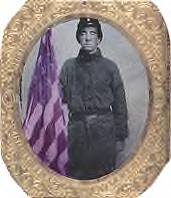
Union soldier Elisha Hunt Rhodes visits Washington during a typical week in winter quarters. Although combat was the main job of a soldier, most men serving in the Civil War spent very few days each year in actual combat. Rhodes kept a diary during his four years in the Union army, and his notes reveal the monotony of the winter months in the Army of the Potomac. A member of the 2nd Rhode Island, Rhodes fought in every campaign from First Bull Run to Appomattox and he rose from private to colonel in four years.
The winter months were usually quiet for the soldiers. The wet, cold weather made movement very difficult, and there were few major battles fought during this time. Days were spent drilling, and Rhodes wrote that other days were spent sleeping and smoking. Many gambled among themselves, and others drank or visited the prostitutes that plied their trade near the camps. Picket duty could be a welcome respite to the boredom, and Rhodes' unit built a road during one winter encampment. On another winter occasion, he wrote: "One day is much like another at headquarters." Rhodes spent most of his winter months in or near Washington, and the capital city provided many more diversions than those available to soldiers in more remote locations. On this day, Rhodes went to hear Senator Henry Wilson from Massachusetts speak on expelling disloyal members of Congress. After listening to the speech, Rhodes and friend Isaac Cooper attended a fair at a Methodist church and met two young women, who the soldiers escorted home.
Like other soldiers, Rhodes welcomed the departure from winter quarters and an end to the monotony. "Our turn has come," he wrote excitedly when his unit began moving south to Richmond in 1864.

Union soldier Elisha Hunt Rhodes visits Washington during a typical week in winter quarters. Although combat was the main job of a soldier, most men serving in the Civil War spent very few days each year in actual combat. Rhodes kept a diary during his four years in the Union army, and his notes reveal the monotony of the winter months in the Army of the Potomac. A member of the 2nd Rhode Island, Rhodes fought in every campaign from First Bull Run to Appomattox and he rose from private to colonel in four years.
The winter months were usually quiet for the soldiers. The wet, cold weather made movement very difficult, and there were few major battles fought during this time. Days were spent drilling, and Rhodes wrote that other days were spent sleeping and smoking. Many gambled among themselves, and others drank or visited the prostitutes that plied their trade near the camps. Picket duty could be a welcome respite to the boredom, and Rhodes' unit built a road during one winter encampment. On another winter occasion, he wrote: "One day is much like another at headquarters." Rhodes spent most of his winter months in or near Washington, and the capital city provided many more diversions than those available to soldiers in more remote locations. On this day, Rhodes went to hear Senator Henry Wilson from Massachusetts speak on expelling disloyal members of Congress. After listening to the speech, Rhodes and friend Isaac Cooper attended a fair at a Methodist church and met two young women, who the soldiers escorted home.
Like other soldiers, Rhodes welcomed the departure from winter quarters and an end to the monotony. "Our turn has come," he wrote excitedly when his unit began moving south to Richmond in 1864.
25 February 2006
Today in Civil War History
1862 Legal Tender Act Passed
The U.S. Congress passes the Legal Tender Act, authorizing the use of paper notes to pay the government's bills. This ended the long-standing policy of using only gold or silver in transactions, and it allowed the government to finance the enormously costly war long after its gold and silver reserves were depleted.
Soon after the war began, the federal government began to run low on specie. Several proposals involving the use of bonds were suggested. Finally, Congress began printing money, which the Confederate government had been doing since the beginning of the war. The Legal Tender Act allowed the government to print $150 million in paper money that was not backed by a similar amount of gold and silver. Many bankers and financial experts predicted doom for the economy, as they believed that there would be little confidence in the scheme. There were also misgivings in Congress, as many legislators worried about a complete collapse of the nation's financial infrastructure.
These notes, called "greenbacks," worked much better than expected. It allowed the government to pay its bills and, by increasing the money in circulation, greased the wheels of northern commerce. The greenbacks were legal tender, which meant that creditors had to accept them at face value. The same year, Congress passed an income tax and steep excise taxes, both of which cooled the inflationary pressures created by the greenbacks.
Another legal tender act passed in 1863, and by war's end nearly a half-billion dollars in greenbacks had been issued. The Legal Tender Act laid the foundation for the creation of a permanent currency in the decades after the Civil War.
The U.S. Congress passes the Legal Tender Act, authorizing the use of paper notes to pay the government's bills. This ended the long-standing policy of using only gold or silver in transactions, and it allowed the government to finance the enormously costly war long after its gold and silver reserves were depleted.
Soon after the war began, the federal government began to run low on specie. Several proposals involving the use of bonds were suggested. Finally, Congress began printing money, which the Confederate government had been doing since the beginning of the war. The Legal Tender Act allowed the government to print $150 million in paper money that was not backed by a similar amount of gold and silver. Many bankers and financial experts predicted doom for the economy, as they believed that there would be little confidence in the scheme. There were also misgivings in Congress, as many legislators worried about a complete collapse of the nation's financial infrastructure.
These notes, called "greenbacks," worked much better than expected. It allowed the government to pay its bills and, by increasing the money in circulation, greased the wheels of northern commerce. The greenbacks were legal tender, which meant that creditors had to accept them at face value. The same year, Congress passed an income tax and steep excise taxes, both of which cooled the inflationary pressures created by the greenbacks.
Another legal tender act passed in 1863, and by war's end nearly a half-billion dollars in greenbacks had been issued. The Legal Tender Act laid the foundation for the creation of a permanent currency in the decades after the Civil War.
24 February 2006
NPS Out To Solve "Southern Bias" At NMP's
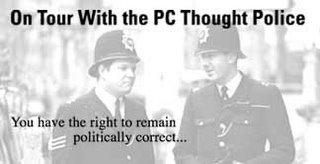
GETTYSBURG, Pennsylvania (Reuters) -- The National Park Service has
embarked on an effort to change its interpretive materials at major
Civil War battlefields to get rid of a Southern bias and emphasize
the horrors of slavery.
The project seems particularly relevant following the furor over
Republican Sen. Trent Lott's recent remarks seeming to endorse racial
segregation, which forced many Americans to revisit one of the uglier
chapters of the nation's history.
Nowhere is the project more striking than at Gettysburg, site of the
largest battle ever fought on American soil, where plans are going
ahead to build a new visitors center and museum at a cost of $95
million that will completely change the way the conflict is presented
to visitors.
"For the past 100 years, we've been presenting this battlefield as
the high watermark of the Confederacy and focusing on the personal
valor of the soldiers who fought here," said Gettysburg Park
Superintendent John Latschar.
"We want to change the perception so that Gettysburg becomes known
internationally as the place of a 'new rebirth of freedom,'" he said,
quoting President Abraham Lincoln's "Gettysburg Address" made
November 19, 1863, five months after the battle.
"We want to get away from the traditional descriptions of who shot
whom, where and into discussions of why they were shooting one
another," Latschar said.
When it opens in 2006, the new museum will offer visitors a narrative
of the entire Civil War, putting the battle into its larger
historical context.
Latschar said he was inspired by the U.S. Holocaust Memorial Museum
in Washington, D.C., which sets out to tell a story rather than to
display historical artifacts behind glass cases.
"Our current museum is absolutely abysmal. It tells no story. It's a
curator's museum with no rhyme or reason," Latschar said.
It is also failing to preserve the 700,000 items in its collection,
including 350,000 maps, documents and photographs, many of which were
rotting away or crumbling into dust until they were put into
temporary storage.
Few blacks visit Gettysburg
Around 1.8 million people visit Gettysburg every year. Latschar said
a disproportionate number were men and the park attracts very few
black visitors.
In 1998, he invited three prominent historians to examine the site.
Their conclusion: that Gettysburg's interpretive programs had
a "pervasive southern sympathy."
The same was true at most if not all of the 28 Civil War sites
operated by the National Parks Service. A report to Congress
delivered in March 2000 found that only nine did an adequate job of
addressing slavery in their exhibits.
Another six, including Gettysburg, gave it a cursory mention. The
rest did not mention it at all. Most parks are now trying to correct
the situation.
Park rangers and licensed guides at Gettysburg and other sites have
already changed their presentations in line with the new policy. Now,
park authorities are looking at brochures, handouts and roadside
signs.
According to Dwight Pitcaithley, chief historian of the National Park
Service, the South had tremendous success in promoting its "lost
cause" theory.
The theory rested on three propositions: that the war was fought
over "states' rights" and not over slavery; that there was no
dishonor in defeat since the Confederacy lost only because it was
overwhelmed by the richer north; and that slavery was a benign
institution and most slaves were content with their lot and faithful
to their masters.
"Much of the public conversation today about the Civil War and its
meaning for contemporary society is shaped by structured forgetting
and wishful thinking," he said.

GETTYSBURG, Pennsylvania (Reuters) -- The National Park Service has
embarked on an effort to change its interpretive materials at major
Civil War battlefields to get rid of a Southern bias and emphasize
the horrors of slavery.
The project seems particularly relevant following the furor over
Republican Sen. Trent Lott's recent remarks seeming to endorse racial
segregation, which forced many Americans to revisit one of the uglier
chapters of the nation's history.
Nowhere is the project more striking than at Gettysburg, site of the
largest battle ever fought on American soil, where plans are going
ahead to build a new visitors center and museum at a cost of $95
million that will completely change the way the conflict is presented
to visitors.
"For the past 100 years, we've been presenting this battlefield as
the high watermark of the Confederacy and focusing on the personal
valor of the soldiers who fought here," said Gettysburg Park
Superintendent John Latschar.
"We want to change the perception so that Gettysburg becomes known
internationally as the place of a 'new rebirth of freedom,'" he said,
quoting President Abraham Lincoln's "Gettysburg Address" made
November 19, 1863, five months after the battle.
"We want to get away from the traditional descriptions of who shot
whom, where and into discussions of why they were shooting one
another," Latschar said.
When it opens in 2006, the new museum will offer visitors a narrative
of the entire Civil War, putting the battle into its larger
historical context.
Latschar said he was inspired by the U.S. Holocaust Memorial Museum
in Washington, D.C., which sets out to tell a story rather than to
display historical artifacts behind glass cases.
"Our current museum is absolutely abysmal. It tells no story. It's a
curator's museum with no rhyme or reason," Latschar said.
It is also failing to preserve the 700,000 items in its collection,
including 350,000 maps, documents and photographs, many of which were
rotting away or crumbling into dust until they were put into
temporary storage.
Few blacks visit Gettysburg
Around 1.8 million people visit Gettysburg every year. Latschar said
a disproportionate number were men and the park attracts very few
black visitors.
In 1998, he invited three prominent historians to examine the site.
Their conclusion: that Gettysburg's interpretive programs had
a "pervasive southern sympathy."
The same was true at most if not all of the 28 Civil War sites
operated by the National Parks Service. A report to Congress
delivered in March 2000 found that only nine did an adequate job of
addressing slavery in their exhibits.
Another six, including Gettysburg, gave it a cursory mention. The
rest did not mention it at all. Most parks are now trying to correct
the situation.
Park rangers and licensed guides at Gettysburg and other sites have
already changed their presentations in line with the new policy. Now,
park authorities are looking at brochures, handouts and roadside
signs.
According to Dwight Pitcaithley, chief historian of the National Park
Service, the South had tremendous success in promoting its "lost
cause" theory.
The theory rested on three propositions: that the war was fought
over "states' rights" and not over slavery; that there was no
dishonor in defeat since the Confederacy lost only because it was
overwhelmed by the richer north; and that slavery was a benign
institution and most slaves were content with their lot and faithful
to their masters.
"Much of the public conversation today about the Civil War and its
meaning for contemporary society is shaped by structured forgetting
and wishful thinking," he said.
Today in Civil War History
1864 Battle of Dalton, Georgia, begins
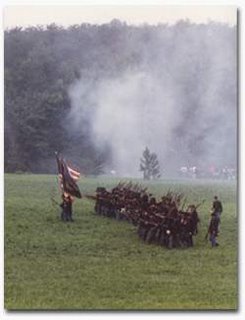
Union General George Thomas attacks Joseph Johnston's Confederates near Dalton, Georgia, as the Yankees probe Johnston's defenses in search of a weakness. Thomas found the position too strong and he ceased the offensive the next day, but the Yankees learned a lesson they would apply during the Atlanta campaign that summer.
General Ulysses S. Grant, the overall commander of Union troops in the west, drove the Confederates out of Tennessee at the Battle of Missionary Ridge and Lookout Mountain in November 1863. The Army of Tennessee, then commanded by General Braxton Bragg, fell back to northern Georgia, where Bragg was replaced by Johnston. The defensive-minded Johnston arranged his force along the imposing Rocky Face Ridge near Dalton.
Grant sent part of his army under General William T. Sherman to Mississippi for a campaign against Meridian, a major supply center. This forced Johnston to send part of his army to reinforce Leonidas Polk, who was defending Meridian against Sherman. When Grant became aware of this transfer, he sent Thomas to probe Johnston's defenses in hopes of finding a weak spot among the depleted Confederates. The Yankees enjoyed initial success but soon found that Johnston's troops were strong. The reinforcements sent towards Mississippi were no longer needed after Polk abandoned Meridian, so they returned to Johnston's army. Now, Thomas was outnumbered and was forced to retreat after February 25.
Casualties were light. Thomas suffered just fewer than 300 men killed, wounded, or captured, while Johnston lost 140. The Union generals did learn a valuable lesson, though-a direct attack against Rocky Face Ridge was foolish. Three months later, Sherman, in command after Grant was promoted to commander of all forces, sent part of his army further south to another gap that was undefended by the Confederates. The intelligence garnered from the Battle of Dalton helped pave the way for a Union victory that summer.
~The History Channel~

Union General George Thomas attacks Joseph Johnston's Confederates near Dalton, Georgia, as the Yankees probe Johnston's defenses in search of a weakness. Thomas found the position too strong and he ceased the offensive the next day, but the Yankees learned a lesson they would apply during the Atlanta campaign that summer.
General Ulysses S. Grant, the overall commander of Union troops in the west, drove the Confederates out of Tennessee at the Battle of Missionary Ridge and Lookout Mountain in November 1863. The Army of Tennessee, then commanded by General Braxton Bragg, fell back to northern Georgia, where Bragg was replaced by Johnston. The defensive-minded Johnston arranged his force along the imposing Rocky Face Ridge near Dalton.
Grant sent part of his army under General William T. Sherman to Mississippi for a campaign against Meridian, a major supply center. This forced Johnston to send part of his army to reinforce Leonidas Polk, who was defending Meridian against Sherman. When Grant became aware of this transfer, he sent Thomas to probe Johnston's defenses in hopes of finding a weak spot among the depleted Confederates. The Yankees enjoyed initial success but soon found that Johnston's troops were strong. The reinforcements sent towards Mississippi were no longer needed after Polk abandoned Meridian, so they returned to Johnston's army. Now, Thomas was outnumbered and was forced to retreat after February 25.
Casualties were light. Thomas suffered just fewer than 300 men killed, wounded, or captured, while Johnston lost 140. The Union generals did learn a valuable lesson, though-a direct attack against Rocky Face Ridge was foolish. Three months later, Sherman, in command after Grant was promoted to commander of all forces, sent part of his army further south to another gap that was undefended by the Confederates. The intelligence garnered from the Battle of Dalton helped pave the way for a Union victory that summer.
~The History Channel~
23 February 2006
Explosion Rocks Confederate Line; Union Fails To Capitalize
 Confederate & Union Dead at The Crater
Confederate & Union Dead at The Crater
Saturday July 30, 1864
by Andy Etman, Associated Press
Near Petersburg, Va.- Union forces under the command of Maj. Gen. Ambrose Burnside suffered more than 4,000 casualties early today in what is being called the Battle of the Crater. The battle, part of the nine-month siege of Petersburg, was the brainchild of Union Lt. Col. Henry Pleasants, a northeastern Pennsylvania mining engineer and commander of the 48th Pennsylvania Volunteers.
Before the war, Pleasants had worked for the Pennsylvania Railroad and was associated with digging a lengthy tunnel through the Allegheny Mountains. He has also worked as a mining engineer, most recently in Schuylkill County, PA.
According to sources that wish to remain anonymous, Pleasants had suggested to his superiors that the strongly entrenched Confederate lines near Petersburg could be breached by digging a mine and placing explosives directly underneath the Confederate position. The plan was unanimously approved by Gen. Burnside, Brig. Gen. George G. Meade and Lt. Gen. Ulysses S. Grant.
Pleasants' men apparently began digging the mine on June 25. He was afforded little help by skeptical Army engineers, but devised successful methods for ventilating the shaft and disposing of the dirt during the digging.
 Pennsylvania Tunnel Rats
Pennsylvania Tunnel Rats
Working for less than a month, the experienced coal miners from the Schuylkill County area completed a 510-foot tunnel to the Confederate position, which was on a ridge known as Elliot's or Pegram's Salient. At the end of the tunnel, the troops dug a 75-foot shaft underneath the salient, where they placed 8,000 pounds of gunpowder. The powder was ignited shortly before 5 a.m. this morning. One Union soldier, speaking on the promise of anonymity, described the scene: "Suddenly the earth trembled under our feet. An enormous mass sprang into the air. A mass without form or shape, full of red flames, and carried on a bed of lightning flashes, mounted towards heaven with a detonation of thunder."
"It spread out like a swarm, like a huge mushroom whose stem seemed to be of fire and its head of smoke. Then everything appeared to bust up and fall back to the earth in a rain of soil mixed with rocks, beams, timbers, and mangled human bodies, leaving in its wake a cloud of white smoke, which rose up higher than I could see, and a cloud of gray dust, which fell slowly towards the earth."
Another soldier described it as a "tremendous blast which cleft the hills beyond the lines, a large column of earth and smoke shot upward, the sides of it flashing out sparks of fire. It seemed to hang for a moment in mid-air, and then, hurtling down with a roaring sound, showers of stones, broken timbers, and blackened human limbs."
The blast created a crater that measured about 170 feet long, 70 feet wide and 30 feet deep in places. The Confederates lost 278 men as a direct result of the explosion. Many other Confederate troops were seen running from the area immediately after the blast. This huge gap had been made in the Confederate network of trenches.
 4th U.S. Colored Troops, supposed to be first in today
4th U.S. Colored Troops, supposed to be first in today
Gen. Burnside's plan had originally called for the 4th division, a division of black troops under the command of Gen. Edward Ferrero to rush through the gap created by the explosion and take the heights overlooking Petersburg. Gen. Meade changed the order of battle after becoming concerned about possible criticism should the 4th Division fail in their first combat action and suffer high casualties. At the last minute he ordered Burnside to select another division to make the initial charge, and was backed up by Gen. Grant.
Burnside selected by lottery the 1st Division led by Gen. James Ledlie, described as the most unfit and drunkest of Burnside's division commanders. Ledlie's troops, with their commander drinking rum a safe 400 yards behind the line, rushed toward the crater and, instead of moving around its edges toward Cemetery Hill to exploit the breach in the line, entered the crater in mass confusion.
Confederate forces recovered from the initial shock and opened up with artillery fire into the crater with deadly effect. Confederate Gen. William Mahone organized a counterassault that occupied the rim of the crater, where his troops fired into the mass of Union soldiers. The gap in the Confederate lines had closed. Soon, the Union soldiers were ankle deep in blood, with severed limbs and bodies stacking up and adding to the congestion. Bayoneted rifles were hurled like javelins, and grenades were lobbed into the Crater, with devastating results. By 1 p.m., the battle was over. Gen. Grant was quoted after the battle, calling it "a stupendous failure."
 Confederate & Union Dead at The Crater
Confederate & Union Dead at The CraterSaturday July 30, 1864
by Andy Etman, Associated Press
Near Petersburg, Va.- Union forces under the command of Maj. Gen. Ambrose Burnside suffered more than 4,000 casualties early today in what is being called the Battle of the Crater. The battle, part of the nine-month siege of Petersburg, was the brainchild of Union Lt. Col. Henry Pleasants, a northeastern Pennsylvania mining engineer and commander of the 48th Pennsylvania Volunteers.
Before the war, Pleasants had worked for the Pennsylvania Railroad and was associated with digging a lengthy tunnel through the Allegheny Mountains. He has also worked as a mining engineer, most recently in Schuylkill County, PA.
According to sources that wish to remain anonymous, Pleasants had suggested to his superiors that the strongly entrenched Confederate lines near Petersburg could be breached by digging a mine and placing explosives directly underneath the Confederate position. The plan was unanimously approved by Gen. Burnside, Brig. Gen. George G. Meade and Lt. Gen. Ulysses S. Grant.
Pleasants' men apparently began digging the mine on June 25. He was afforded little help by skeptical Army engineers, but devised successful methods for ventilating the shaft and disposing of the dirt during the digging.
 Pennsylvania Tunnel Rats
Pennsylvania Tunnel RatsWorking for less than a month, the experienced coal miners from the Schuylkill County area completed a 510-foot tunnel to the Confederate position, which was on a ridge known as Elliot's or Pegram's Salient. At the end of the tunnel, the troops dug a 75-foot shaft underneath the salient, where they placed 8,000 pounds of gunpowder. The powder was ignited shortly before 5 a.m. this morning. One Union soldier, speaking on the promise of anonymity, described the scene: "Suddenly the earth trembled under our feet. An enormous mass sprang into the air. A mass without form or shape, full of red flames, and carried on a bed of lightning flashes, mounted towards heaven with a detonation of thunder."
"It spread out like a swarm, like a huge mushroom whose stem seemed to be of fire and its head of smoke. Then everything appeared to bust up and fall back to the earth in a rain of soil mixed with rocks, beams, timbers, and mangled human bodies, leaving in its wake a cloud of white smoke, which rose up higher than I could see, and a cloud of gray dust, which fell slowly towards the earth."
Another soldier described it as a "tremendous blast which cleft the hills beyond the lines, a large column of earth and smoke shot upward, the sides of it flashing out sparks of fire. It seemed to hang for a moment in mid-air, and then, hurtling down with a roaring sound, showers of stones, broken timbers, and blackened human limbs."
The blast created a crater that measured about 170 feet long, 70 feet wide and 30 feet deep in places. The Confederates lost 278 men as a direct result of the explosion. Many other Confederate troops were seen running from the area immediately after the blast. This huge gap had been made in the Confederate network of trenches.
 4th U.S. Colored Troops, supposed to be first in today
4th U.S. Colored Troops, supposed to be first in todayGen. Burnside's plan had originally called for the 4th division, a division of black troops under the command of Gen. Edward Ferrero to rush through the gap created by the explosion and take the heights overlooking Petersburg. Gen. Meade changed the order of battle after becoming concerned about possible criticism should the 4th Division fail in their first combat action and suffer high casualties. At the last minute he ordered Burnside to select another division to make the initial charge, and was backed up by Gen. Grant.
Burnside selected by lottery the 1st Division led by Gen. James Ledlie, described as the most unfit and drunkest of Burnside's division commanders. Ledlie's troops, with their commander drinking rum a safe 400 yards behind the line, rushed toward the crater and, instead of moving around its edges toward Cemetery Hill to exploit the breach in the line, entered the crater in mass confusion.
Confederate forces recovered from the initial shock and opened up with artillery fire into the crater with deadly effect. Confederate Gen. William Mahone organized a counterassault that occupied the rim of the crater, where his troops fired into the mass of Union soldiers. The gap in the Confederate lines had closed. Soon, the Union soldiers were ankle deep in blood, with severed limbs and bodies stacking up and adding to the congestion. Bayoneted rifles were hurled like javelins, and grenades were lobbed into the Crater, with devastating results. By 1 p.m., the battle was over. Gen. Grant was quoted after the battle, calling it "a stupendous failure."
Today in Civil War History
1861 Lincoln arrives in Washington

President-elect Abraham Lincoln arrives in Washington amid secrecy and tight security. With seven states having already seceded from the Union since Lincoln's election, the threat of civil war hung in the air.
Allen Pinkerton, head of a private detective agency, had uncovered a plot to assassinate Lincoln when he passed through Baltimore on his way to the capital. Lincoln and his advisors disagreed about how to respond to the threat. Some, including Pinkerton, wanted Lincoln to slip secretly into Washington, which would mean skipping an address to the Pennsylvania legislature in Harrisburg. Lincoln did not want to appear cowardly, but he felt the threats were serious.
Lincoln agreed to the covert arrival. With Pinkerton and Ward Hill Lamon, his former law partner, Lincoln slipped out of the hotel in Harrisburg on the evening of February 22. He wore a soft felt hat instead of his customary stovepipe hat, and he draped an overcoat over his shoulders and hunched slightly to disguise his height. The group boarded a sleeper car and arrived in Baltimore in the middle of the night. The trio slipped undetected from the Calvert Street station to Camden station across town. There, they boarded another train and arrived without incident in Washington at 6:00 a.m. On the platform, the party was surprised when a voice boomed, "Abe, you can't play that on me." It was Congressman Elihu B. Washburne, a friend of Lincoln's from Illinois. Washburne escorted Lincoln to the Willard Hotel.
A myth arose that Lincoln had dressed as a woman to avoid detection, but this was not the case. He did draw considerable criticism in the press for his unceremonious arrival. Northern diarist George Templeton Strong commented that if convincing evidence of a plot did not surface, "the surreptitious nocturnal dodging...will be used to damage his moral position and throw ridicule on his Administration." Lincoln later regretted the caper and commented to a friend "I did not then, nor do I now believe I should have been assassinated had I gone through Baltimore..." Regardless of how he had arrived, Lincoln was safely in Washington, ready to assume the difficult task ahead.

President-elect Abraham Lincoln arrives in Washington amid secrecy and tight security. With seven states having already seceded from the Union since Lincoln's election, the threat of civil war hung in the air.
Allen Pinkerton, head of a private detective agency, had uncovered a plot to assassinate Lincoln when he passed through Baltimore on his way to the capital. Lincoln and his advisors disagreed about how to respond to the threat. Some, including Pinkerton, wanted Lincoln to slip secretly into Washington, which would mean skipping an address to the Pennsylvania legislature in Harrisburg. Lincoln did not want to appear cowardly, but he felt the threats were serious.
Lincoln agreed to the covert arrival. With Pinkerton and Ward Hill Lamon, his former law partner, Lincoln slipped out of the hotel in Harrisburg on the evening of February 22. He wore a soft felt hat instead of his customary stovepipe hat, and he draped an overcoat over his shoulders and hunched slightly to disguise his height. The group boarded a sleeper car and arrived in Baltimore in the middle of the night. The trio slipped undetected from the Calvert Street station to Camden station across town. There, they boarded another train and arrived without incident in Washington at 6:00 a.m. On the platform, the party was surprised when a voice boomed, "Abe, you can't play that on me." It was Congressman Elihu B. Washburne, a friend of Lincoln's from Illinois. Washburne escorted Lincoln to the Willard Hotel.
A myth arose that Lincoln had dressed as a woman to avoid detection, but this was not the case. He did draw considerable criticism in the press for his unceremonious arrival. Northern diarist George Templeton Strong commented that if convincing evidence of a plot did not surface, "the surreptitious nocturnal dodging...will be used to damage his moral position and throw ridicule on his Administration." Lincoln later regretted the caper and commented to a friend "I did not then, nor do I now believe I should have been assassinated had I gone through Baltimore..." Regardless of how he had arrived, Lincoln was safely in Washington, ready to assume the difficult task ahead.
22 February 2006
Today in Civil War History
1864 Battle of West Point, Mississippi
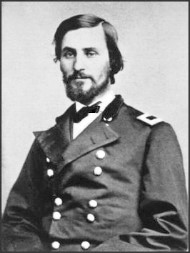 William Sooy Smith
William Sooy Smith
Confederate General Nathan Bedford Forrest routs a Union force three times the size of his army in a battle that helped end Union General William T. Sherman's expedition into Alabama.
Sherman was marching an army east across Mississippi from Vicksburg to Meridian. He had captured and destroyed a vital Confederate supply center at Meridian and was planning to move further east to Selma, Alabama, another Rebel supply base. Sherman was relying on cavalry support from General William Sooy Smith, who was coming southeast from Memphis, Tennessee. Sherman directed Smith to meet him at Meridian on February 10, but Sherman did not occupy Meridian until February 14. Meanwhile, Smith dallied in Tennessee waiting for the arrival of Colonel George Waring Jr.'s cavalry brigade from Kentucky, and did not leave for Mississippi until February 11.
On February 20, some of Smith's men skirmished with Confederates near West Point, just over 100 miles north of Meridian. The Yankee troops slowly drove the Confederates back through West Point. The next day, more skirmishing flared as the troops continued south. The Confederates were led by Jeffrey Forrest, Nathan's younger brother. The elder Forrest waited south of West Point with the intent of drawing Smith's force into a swampy area between two rivers. Smith caught on to the plan just before it was too late and began a retreat back through West Point. On February 22, The Yankees made a stand north of West Point and fought off a Confederate attack during which Jeffrey Forrest was killed. With the older Forrest blocking his way to Meridian, Smith retreated back to Memphis.
The Confederates suffered 144 men killed, wounded, or missing, while the Union lost 324. The engagement was significant because Sherman was forced to return to Vicksburg. The battle also lifted Confederate morale and enhanced the reputation of Nathan Bedford Forrest, who had taken on a much larger Union force and won.
 William Sooy Smith
William Sooy SmithConfederate General Nathan Bedford Forrest routs a Union force three times the size of his army in a battle that helped end Union General William T. Sherman's expedition into Alabama.
Sherman was marching an army east across Mississippi from Vicksburg to Meridian. He had captured and destroyed a vital Confederate supply center at Meridian and was planning to move further east to Selma, Alabama, another Rebel supply base. Sherman was relying on cavalry support from General William Sooy Smith, who was coming southeast from Memphis, Tennessee. Sherman directed Smith to meet him at Meridian on February 10, but Sherman did not occupy Meridian until February 14. Meanwhile, Smith dallied in Tennessee waiting for the arrival of Colonel George Waring Jr.'s cavalry brigade from Kentucky, and did not leave for Mississippi until February 11.
On February 20, some of Smith's men skirmished with Confederates near West Point, just over 100 miles north of Meridian. The Yankee troops slowly drove the Confederates back through West Point. The next day, more skirmishing flared as the troops continued south. The Confederates were led by Jeffrey Forrest, Nathan's younger brother. The elder Forrest waited south of West Point with the intent of drawing Smith's force into a swampy area between two rivers. Smith caught on to the plan just before it was too late and began a retreat back through West Point. On February 22, The Yankees made a stand north of West Point and fought off a Confederate attack during which Jeffrey Forrest was killed. With the older Forrest blocking his way to Meridian, Smith retreated back to Memphis.
The Confederates suffered 144 men killed, wounded, or missing, while the Union lost 324. The engagement was significant because Sherman was forced to return to Vicksburg. The battle also lifted Confederate morale and enhanced the reputation of Nathan Bedford Forrest, who had taken on a much larger Union force and won.
21 February 2006
Vila Americana, Brazil
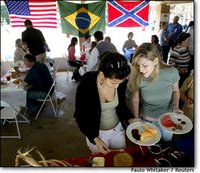

A discussion in class today talked about Lincoln's offer to colonize a portion of Central America with freed slaves. I thought I had read about such a colony, but I was mistaken. What I was thinking of was Vila Americana, Brazil. Read on...
Another place that many Southerners left for after the close of the war was Brazil. Some 20,000 Southerners packed all of their belongings and boarded ships with names like "Talisman," "Vixen," "Red Gauntlet" and "Mariposa" at the ports of New Orleans, New York City, Mobile and Galveston.
The Brazilian government was very sentimental to the Confederate cause. When Southerners disembarked in the town of Santos there was a band there to greet them, playing "Dixie." Sometimes the leader of the band was Emperor Dom Pedro. The Emperor's government had arranged for inexpensive transportation to Brazil for the Southern emigrants. He offered them land at 22 cents per acre. Settlements were begun in the states of Espiritu Santa, Para, Parana, Minas Gerias, Pernambuco, Bahia and Sao Paulo. Only the colonies in Sao Paulo state - in Vila Americana and in the surrounding villages of Campinas, Bom Retiro and Santa Barbara d'Oeste - have survived.
These emigrants came to be known locally as "Confederados." There was one short-lived settlement along the Amazon River at Santarem. Even today, certain Amazon tribes decorate their pottery with the design of Confederate flags, the result of having encountered the colonists who chose to settle in the vast jungle. Two Confederate Generals, A.T. Hawthorne and W.W. Wood, emigrated to Brazil. Also, Ben and Dalton Yancey, sons of the Alabama secessionist Senator William Lowndes Yancey, joined the colonists in Sao Paulo state. A Texan, Fran McMulland and 152 other colonists also emigrated to Iguape (Sao Paulo state).
In the town of Vila Americana there exists a Protestant Chapel that descendants of Confederate colonists attend services in on each Sunday. Upon the altar are draped the banners of Brazil, the United States and the Confederate States of America. "Dixie" is played at the services where sermons are preached in Portuguese and in English. A Confederate monument exists there also. In the same village Confederate veteran Napoleon Bonaparte McAlpin is buried. Upon his tombstone is inscribed "Soldado descansa! Tua luta acabou..." "Soldier rest! Thy warfare o'er..."
Here's a link on the Masonic origins of Americana.
An article from the Washington Post.
History of the Confederados.
SCV Camp #1653, Americana, Brazil


A discussion in class today talked about Lincoln's offer to colonize a portion of Central America with freed slaves. I thought I had read about such a colony, but I was mistaken. What I was thinking of was Vila Americana, Brazil. Read on...
Another place that many Southerners left for after the close of the war was Brazil. Some 20,000 Southerners packed all of their belongings and boarded ships with names like "Talisman," "Vixen," "Red Gauntlet" and "Mariposa" at the ports of New Orleans, New York City, Mobile and Galveston.
The Brazilian government was very sentimental to the Confederate cause. When Southerners disembarked in the town of Santos there was a band there to greet them, playing "Dixie." Sometimes the leader of the band was Emperor Dom Pedro. The Emperor's government had arranged for inexpensive transportation to Brazil for the Southern emigrants. He offered them land at 22 cents per acre. Settlements were begun in the states of Espiritu Santa, Para, Parana, Minas Gerias, Pernambuco, Bahia and Sao Paulo. Only the colonies in Sao Paulo state - in Vila Americana and in the surrounding villages of Campinas, Bom Retiro and Santa Barbara d'Oeste - have survived.
These emigrants came to be known locally as "Confederados." There was one short-lived settlement along the Amazon River at Santarem. Even today, certain Amazon tribes decorate their pottery with the design of Confederate flags, the result of having encountered the colonists who chose to settle in the vast jungle. Two Confederate Generals, A.T. Hawthorne and W.W. Wood, emigrated to Brazil. Also, Ben and Dalton Yancey, sons of the Alabama secessionist Senator William Lowndes Yancey, joined the colonists in Sao Paulo state. A Texan, Fran McMulland and 152 other colonists also emigrated to Iguape (Sao Paulo state).
In the town of Vila Americana there exists a Protestant Chapel that descendants of Confederate colonists attend services in on each Sunday. Upon the altar are draped the banners of Brazil, the United States and the Confederate States of America. "Dixie" is played at the services where sermons are preached in Portuguese and in English. A Confederate monument exists there also. In the same village Confederate veteran Napoleon Bonaparte McAlpin is buried. Upon his tombstone is inscribed "Soldado descansa! Tua luta acabou..." "Soldier rest! Thy warfare o'er..."
Here's a link on the Masonic origins of Americana.
An article from the Washington Post.
History of the Confederados.
SCV Camp #1653, Americana, Brazil
Today in Civil War History
1862 Battle of Val Verde
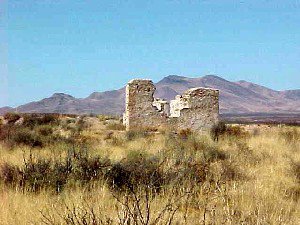
Confederate troops under General Henry Hopkins Sibley attack Union troops commanded by Colonel Edward R. S. Canby near Fort Craig in New Mexico Territory. The first major engagement of the war in the far West, the battle produces heavy casualties but no decisive result.
This action was part of the broader movement by the Confederates to capture New Mexico and other parts of the West. This would secure territory that the Rebels thought was rightfully theirs but had been denied them by political compromises made before the Civil War. Furthermore, the cash-strapped Confederacy could use western mines to fill their treasury. From San Antonio, the Rebels moved into southern New Mexico (which included Arizona) and captured the towns of Mesilla, Doýa Ana, and Tucson. Sibley, with 3,000 troops, now moved north against the Federal stronghold at Fort Craig on the Rio Grande.
At Fort Craig, Canby was determined to make the Confederates lay siege to the post. The Rebels, Canby reasoned, could not wait long before running low on supplies. Canby knew that Sibley did not possess sufficiently heavy artillery to attack the fort. When Sibley arrived near Fort Craig on February 15, he ordered his men to swing east of the fort, cross the Rio Grande, and then capture the Val Verde fords of the Rio Grande. He hoped to cut off Canby's communication and force the Yankees out into the open.
At the fords, five miles north of Fort Craig, a Union detachment attacked part of the Confederate force. They pinned the Texans in a ravine and were on the verge of routing the Rebels when more of Sibley's men arrived and turned the tide. Sibley's second in command, Colonel Tom Green, filling in for an ill Sibley, made a bold counterattack against the Union left flank. The Yankees fell back in retreat, and headed back to Fort Craig.
The Union suffered 68 killed, 160 wounded, and 35 missing out of 3,100 engaged. The Confederates suffered 31 killed, 154 wounded, and 1 missing out of 2,600 troops. It was a bloody but indecisive battle. Sibley's men continued up the Rio Grande. Within a few weeks, they captured Albuquerque and Santa Fe before they were stopped at the Battle of Glorieta Pass on March 28.
~The History Channel~

Confederate troops under General Henry Hopkins Sibley attack Union troops commanded by Colonel Edward R. S. Canby near Fort Craig in New Mexico Territory. The first major engagement of the war in the far West, the battle produces heavy casualties but no decisive result.
This action was part of the broader movement by the Confederates to capture New Mexico and other parts of the West. This would secure territory that the Rebels thought was rightfully theirs but had been denied them by political compromises made before the Civil War. Furthermore, the cash-strapped Confederacy could use western mines to fill their treasury. From San Antonio, the Rebels moved into southern New Mexico (which included Arizona) and captured the towns of Mesilla, Doýa Ana, and Tucson. Sibley, with 3,000 troops, now moved north against the Federal stronghold at Fort Craig on the Rio Grande.
At Fort Craig, Canby was determined to make the Confederates lay siege to the post. The Rebels, Canby reasoned, could not wait long before running low on supplies. Canby knew that Sibley did not possess sufficiently heavy artillery to attack the fort. When Sibley arrived near Fort Craig on February 15, he ordered his men to swing east of the fort, cross the Rio Grande, and then capture the Val Verde fords of the Rio Grande. He hoped to cut off Canby's communication and force the Yankees out into the open.
At the fords, five miles north of Fort Craig, a Union detachment attacked part of the Confederate force. They pinned the Texans in a ravine and were on the verge of routing the Rebels when more of Sibley's men arrived and turned the tide. Sibley's second in command, Colonel Tom Green, filling in for an ill Sibley, made a bold counterattack against the Union left flank. The Yankees fell back in retreat, and headed back to Fort Craig.
The Union suffered 68 killed, 160 wounded, and 35 missing out of 3,100 engaged. The Confederates suffered 31 killed, 154 wounded, and 1 missing out of 2,600 troops. It was a bloody but indecisive battle. Sibley's men continued up the Rio Grande. Within a few weeks, they captured Albuquerque and Santa Fe before they were stopped at the Battle of Glorieta Pass on March 28.
~The History Channel~
20 February 2006
Today in Civil War History
1864 Battle of Olustee

In the largest battle fought in Florida during the Civil War, a Confederate force under General Joseph Finegan decisively defeats an army commanded by General Truman Seymour. The victory kept the Confederates in control of Florida's interior for the rest of the war.
Olustee was the climax to a Union invasion of Florida a few weeks before. General Quincy Gilmore, commander of the Union's Department of the South, dispatched Seymour to Jacksonville on February 7. Seymour's troops secured the town and began to send cavalry raiders inland to Lake City and Gainesville. Just behind the troops came John Hay, private secretary to President Lincoln. Hay began issuing loyalty oaths to residents in an effort to form a new, Republican state government in time to send delegates to the 1864 party convention. Under the president's plan of reconstruction, a new state government could be formed when 10 percent of the state's prewar voting population had taken a loyalty oath.
Seymour began moving towards Lake City, west of Jacksonville, to destroy a railroad bridge and secure northern Florida. Finegan possessed only 500 men at Lake City, but reinforcements were arriving. By the time the two sides began to skirmish near the railroad station of Olustee, each side had about 5,000 troops. Throughout the day on February 20, a pitched battle raged. The Confederates were close to breaking the Yankee lines when they ran low on ammunition. When more cartridges arrived, the attack continued. By late afternoon, Seymour realized the fight was lost and he began to retreat.
The Yankees suffered 1,800 killed, wounded, or captured, while the Confederates lost about 900 men. It was one of the highest casualty rates of the war for the Union. The battle did disrupt the flow of supplies from Florida to other Confederate armies, but it failed to bring about a new state government. Most of Florida remained in Confederate hands until the end of the war.

In the largest battle fought in Florida during the Civil War, a Confederate force under General Joseph Finegan decisively defeats an army commanded by General Truman Seymour. The victory kept the Confederates in control of Florida's interior for the rest of the war.
Olustee was the climax to a Union invasion of Florida a few weeks before. General Quincy Gilmore, commander of the Union's Department of the South, dispatched Seymour to Jacksonville on February 7. Seymour's troops secured the town and began to send cavalry raiders inland to Lake City and Gainesville. Just behind the troops came John Hay, private secretary to President Lincoln. Hay began issuing loyalty oaths to residents in an effort to form a new, Republican state government in time to send delegates to the 1864 party convention. Under the president's plan of reconstruction, a new state government could be formed when 10 percent of the state's prewar voting population had taken a loyalty oath.
Seymour began moving towards Lake City, west of Jacksonville, to destroy a railroad bridge and secure northern Florida. Finegan possessed only 500 men at Lake City, but reinforcements were arriving. By the time the two sides began to skirmish near the railroad station of Olustee, each side had about 5,000 troops. Throughout the day on February 20, a pitched battle raged. The Confederates were close to breaking the Yankee lines when they ran low on ammunition. When more cartridges arrived, the attack continued. By late afternoon, Seymour realized the fight was lost and he began to retreat.
The Yankees suffered 1,800 killed, wounded, or captured, while the Confederates lost about 900 men. It was one of the highest casualty rates of the war for the Union. The battle did disrupt the flow of supplies from Florida to other Confederate armies, but it failed to bring about a new state government. Most of Florida remained in Confederate hands until the end of the war.
19 February 2006
Today in Civil War History
1821 Francis Preston Blair, Jr., born
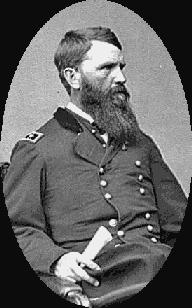
Union General Francis Preston Blair, Jr., is born in Lexington, Kentucky. The colorful Blair was instrumental in keeping Missouri part of the Union during the early stages of the Civil War.
Blair's father had served as an advisor to several presidents. His namesake and youngest son was privileged and rebellious as a youth. As a college student, the younger Blair was expelled from the University of North Carolina and Yale for misconduct. He finally finished his degree at Princeton, but he was denied graduation for participating in a wild party in his final week. The degree was bestowed a year later after an influential friend intervened on his behalf.
Blair studied law in Kentucky and began to practice in Missouri with his brother, Montgomery, who would later serve as Postmaster General under Abraham Lincoln. During the 1850s, Francis ran an anti-slave newspaper in St. Louis and served in the Missouri legislature. He was elected to Congress in 1856. Blair was deeply opposed to the extension of slavery, even though he owned a few slaves himself. His stance led to his defeat for reelection in 1858.
In 1860, Blair campaigned for Abraham Lincoln and regained his Congressional seat. When the war erupted, he organized Missouri's Unionist forces and helped save the Federal arsenal in St. Louis from the Confederates. Blair personally organized seven regiments from Missouri. He became a brigadier general, winning the respect of his superiors, Generals Ulysses S. Grant and William T. Sherman. Blair commanded a corps during Sherman's March to the Sea in 1864.
After the war, Blair served in the U.S. Senate, but a stroke ended his political career. He died in 1875.

Union General Francis Preston Blair, Jr., is born in Lexington, Kentucky. The colorful Blair was instrumental in keeping Missouri part of the Union during the early stages of the Civil War.
Blair's father had served as an advisor to several presidents. His namesake and youngest son was privileged and rebellious as a youth. As a college student, the younger Blair was expelled from the University of North Carolina and Yale for misconduct. He finally finished his degree at Princeton, but he was denied graduation for participating in a wild party in his final week. The degree was bestowed a year later after an influential friend intervened on his behalf.
Blair studied law in Kentucky and began to practice in Missouri with his brother, Montgomery, who would later serve as Postmaster General under Abraham Lincoln. During the 1850s, Francis ran an anti-slave newspaper in St. Louis and served in the Missouri legislature. He was elected to Congress in 1856. Blair was deeply opposed to the extension of slavery, even though he owned a few slaves himself. His stance led to his defeat for reelection in 1858.
In 1860, Blair campaigned for Abraham Lincoln and regained his Congressional seat. When the war erupted, he organized Missouri's Unionist forces and helped save the Federal arsenal in St. Louis from the Confederates. Blair personally organized seven regiments from Missouri. He became a brigadier general, winning the respect of his superiors, Generals Ulysses S. Grant and William T. Sherman. Blair commanded a corps during Sherman's March to the Sea in 1864.
After the war, Blair served in the U.S. Senate, but a stroke ended his political career. He died in 1875.
18 February 2006
Today in Civil War History
1827 Lewis Armistead born
 Lewis Armistead
Lewis Armistead
 Actor Richard Jordan, in "Gettysburg" 1993
Actor Richard Jordan, in "Gettysburg" 1993
Confederate General Lewis Armistead is born in New Bern, North Carolina. Armistead is best known for leading Pickett's Charge at Gettysburg, where he was mortally wounded.
Armistead's father, Walker Keith Armistead, and his five uncles served in the military during the War of 1812. One of them, George Armistead, commanded Fort McHenry at Baltimore during the British bombardment that produced the Star Spangled Banner. Lewis Armistead entered West Point in 1834 but did not graduate due to poor grades, although some sources indicate that the reason was a fight with another cadet, Jubal Early, who was later a comrade in the Army of Northern Virginia.
Despite this, Armistead joined the military as a second lieutenant and fought in the Seminole War in Florida and was cited for heroism three times in the Mexican War. During the 1850s, he served on the frontier and developed a very close friendship with another officer, Pennsylvanian Winfield Scott Hancock. When the Civil War broke out, he resigned his commission to join his home state, Virginia.
At the beginning of the war, Armistead commanded the 57th Virginia Infantry, but by April 1862 he was in a brigadier general. He fought during the Seven Days' battles in June and July 1862, but played only minor roles at Antietam, Fredericksburg, and Chancellorsville. On July 2, 1863, he led a brigade in Pickett's division during the climactic charge at Gettysburg. In a tragic coincidence, Armistead's men attacked Hancock's corps at the center of the Union line on Cemetery Ridge. Armistead crossed the wall that protected the Federal cannon, representing the high water mark of the Confederacy. He fell wounded there, and the attack stalled. Armistead was found by Captain Henry Bingham, an aide to Hancock, and Armistead told him to, "Say to General Hancock for me that I have done him and done you all an injury which I shall regret the longest day that I live." Armistead lingered for two days, and he requested that his personal effects be given to Hancock, who was also seriously wounded that day. Armistead was buried in a family plot at St. Paul's Church in Baltimore, Maryland.
 Lewis Armistead
Lewis Armistead Actor Richard Jordan, in "Gettysburg" 1993
Actor Richard Jordan, in "Gettysburg" 1993Confederate General Lewis Armistead is born in New Bern, North Carolina. Armistead is best known for leading Pickett's Charge at Gettysburg, where he was mortally wounded.
Armistead's father, Walker Keith Armistead, and his five uncles served in the military during the War of 1812. One of them, George Armistead, commanded Fort McHenry at Baltimore during the British bombardment that produced the Star Spangled Banner. Lewis Armistead entered West Point in 1834 but did not graduate due to poor grades, although some sources indicate that the reason was a fight with another cadet, Jubal Early, who was later a comrade in the Army of Northern Virginia.
Despite this, Armistead joined the military as a second lieutenant and fought in the Seminole War in Florida and was cited for heroism three times in the Mexican War. During the 1850s, he served on the frontier and developed a very close friendship with another officer, Pennsylvanian Winfield Scott Hancock. When the Civil War broke out, he resigned his commission to join his home state, Virginia.
At the beginning of the war, Armistead commanded the 57th Virginia Infantry, but by April 1862 he was in a brigadier general. He fought during the Seven Days' battles in June and July 1862, but played only minor roles at Antietam, Fredericksburg, and Chancellorsville. On July 2, 1863, he led a brigade in Pickett's division during the climactic charge at Gettysburg. In a tragic coincidence, Armistead's men attacked Hancock's corps at the center of the Union line on Cemetery Ridge. Armistead crossed the wall that protected the Federal cannon, representing the high water mark of the Confederacy. He fell wounded there, and the attack stalled. Armistead was found by Captain Henry Bingham, an aide to Hancock, and Armistead told him to, "Say to General Hancock for me that I have done him and done you all an injury which I shall regret the longest day that I live." Armistead lingered for two days, and he requested that his personal effects be given to Hancock, who was also seriously wounded that day. Armistead was buried in a family plot at St. Paul's Church in Baltimore, Maryland.
Museum Exhibit


In October, 2005, The New York Historical Society began an unprecedented two-year exploration of the largely unknown chapter of New York City's story - Slavery in New York. If you get a chance, see the exhibit.


In October, 2005, The New York Historical Society began an unprecedented two-year exploration of the largely unknown chapter of New York City's story - Slavery in New York. If you get a chance, see the exhibit.
17 February 2006
Today in Civil War History
1865 Sherman sacks Columbia, South Carolina
The soldiers from Union General William Tecumseh Sherman's army ransack Columbia, South Carolina, and leave a charred city in their wake.
Sherman is most famous for his "March to the Sea" in the closing months of 1864. After capturing Atlanta in September, Sherman cut away from his supply lines and cut a swath of destruction across Georgia on his way to Savannah. His army lived off the land and destroyed railroads, burned warehouses, and ruined plantations along the way. This was a calculated effort--Sherman thought that the war would end quicker if civilians of the South felt some destruction personally, a view supported by General Ulysses S. Grant, commander of all Union forces, and President Lincoln.
After spending a month in Savannah, Sherman headed north to tear the Confederacy into smaller pieces. The Yankee soldiers took particular delight in carrying the war to South Carolina, the symbol of the rebellion. It was the first state to secede and the site of Fort Sumter, where South Carolinians fired on the Federal garrison to start the war. When General Wade Hampton's cavalry evacuated Columbia, the capital was open to Sherman's men.
Many of the Yankees got drunk before starting the rampage. General Henry Slocum observed: "A drunken soldier with a musket in one hand and a match in the other is not a pleasant visitor to have about the house on a dark, windy night." Sherman claimed that the raging fires were started by evacuating Confederates and fanned by high winds. He later wrote: "Though I never ordered it and never wished it, I have never shed any tears over the event, because I believe that it hastened what we all fought for, the end of the War." Belatedly, some Yankees helped fight the fires, but more than two-thirds of the city was destroyed. Already choked with refugees from the path of Sherman's army, Columbia's situation became even more desperate when Sherman's army destroyed the remaining public buildings before marching out of Columbia three days later.
The soldiers from Union General William Tecumseh Sherman's army ransack Columbia, South Carolina, and leave a charred city in their wake.
Sherman is most famous for his "March to the Sea" in the closing months of 1864. After capturing Atlanta in September, Sherman cut away from his supply lines and cut a swath of destruction across Georgia on his way to Savannah. His army lived off the land and destroyed railroads, burned warehouses, and ruined plantations along the way. This was a calculated effort--Sherman thought that the war would end quicker if civilians of the South felt some destruction personally, a view supported by General Ulysses S. Grant, commander of all Union forces, and President Lincoln.
After spending a month in Savannah, Sherman headed north to tear the Confederacy into smaller pieces. The Yankee soldiers took particular delight in carrying the war to South Carolina, the symbol of the rebellion. It was the first state to secede and the site of Fort Sumter, where South Carolinians fired on the Federal garrison to start the war. When General Wade Hampton's cavalry evacuated Columbia, the capital was open to Sherman's men.
Many of the Yankees got drunk before starting the rampage. General Henry Slocum observed: "A drunken soldier with a musket in one hand and a match in the other is not a pleasant visitor to have about the house on a dark, windy night." Sherman claimed that the raging fires were started by evacuating Confederates and fanned by high winds. He later wrote: "Though I never ordered it and never wished it, I have never shed any tears over the event, because I believe that it hastened what we all fought for, the end of the War." Belatedly, some Yankees helped fight the fires, but more than two-thirds of the city was destroyed. Already choked with refugees from the path of Sherman's army, Columbia's situation became even more desperate when Sherman's army destroyed the remaining public buildings before marching out of Columbia three days later.
A Sad Tale To Tell
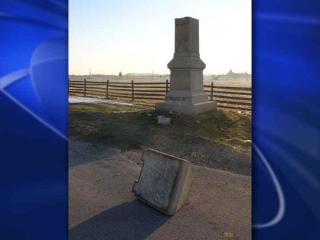
What is the point in vandalizing a Civil War monument? I just do not get it. Three monuments, the 114th Pennsylvania (Toppled), the 11th Massachusetts (Sword stolen), and the monument to the 4th New York Battery (decapitation) desecrated late Wednesday or early Thursday.

What is the point in vandalizing a Civil War monument? I just do not get it. Three monuments, the 114th Pennsylvania (Toppled), the 11th Massachusetts (Sword stolen), and the monument to the 4th New York Battery (decapitation) desecrated late Wednesday or early Thursday.
16 February 2006
Today in Civil War History
1862 Capture of Fort Donelson
General Ulysses S. Grant finishes a spectacular campaign by capturing Fort Donelson on the Cumberland River in Tennessee. This battle came ten days after Grant's capture of Fort Henry, just ten miles to the west on the Tennessee River, and opened the way for Union occupation of central Tennessee.
After Grant surround Fort Henry and forced the surrender of 100 men, he moved east to the much more formidable Fort Donelson. The fort sat on a high bluff and had a garrison of 6,000. After the fall of Fort Henry, an additional 15,000 reinforcements were sent to aid Fort Donelson. Grant crossed the narrow strip of land between the two rivers with only about 15,000 troops. One of Grant's officers, Brigadier General John McClernand, initiated the battle on February 13 when he tried to capture a Rebel Battery along Fort Donelson's outer works. Although unsuccessful, this action probably convinced the Confederates that they faced a superior force, even though they actually outnumbered Grant.
Over the next three days, Grant tightened the noose around Fort Donelson by moving a flotilla up the Cumberland River to shell the fort from the east. On February 15, the Confederates tried to break out of the Yankee perimeter. An attack on the Union right flank and center sent the Federals back in retreat, but then Confederate General Gideon Pillow made a fatal miscalculation. Thinking he could win the battle, Pillow threw away the chance to retreat from Fort Donelson. Instead, he pressed the attack but the Union retreat halted. Now, Grant assaulted the Confederate right wing, which he correctly suspected had been weakened to mount the attack on the other end of the line.
The Confederates were surrounded, with their backs to the Cumberland River. They made an attempt to escape, but only about 5,000 troops got away. These included Colonel Nathan Bedford Forrest and 500 cavalrymen. Forrest later became a legendary leader in the west and his exploits over the next three years caused much aggravation to the Union army. When the Rebels asked for terms of surrender, Grant replied that no terms "except unconditional and immediate surrender" would be acceptable. This earned Ulysses S. Grant the nickname "Unconditional Surrender" Grant. The loss of Fort Henry and Fort Donelson were unmitigated disasters for the Confederates. Kentucky was lost and Tennessee lay wide open to the Yankees.
General Ulysses S. Grant finishes a spectacular campaign by capturing Fort Donelson on the Cumberland River in Tennessee. This battle came ten days after Grant's capture of Fort Henry, just ten miles to the west on the Tennessee River, and opened the way for Union occupation of central Tennessee.
After Grant surround Fort Henry and forced the surrender of 100 men, he moved east to the much more formidable Fort Donelson. The fort sat on a high bluff and had a garrison of 6,000. After the fall of Fort Henry, an additional 15,000 reinforcements were sent to aid Fort Donelson. Grant crossed the narrow strip of land between the two rivers with only about 15,000 troops. One of Grant's officers, Brigadier General John McClernand, initiated the battle on February 13 when he tried to capture a Rebel Battery along Fort Donelson's outer works. Although unsuccessful, this action probably convinced the Confederates that they faced a superior force, even though they actually outnumbered Grant.
Over the next three days, Grant tightened the noose around Fort Donelson by moving a flotilla up the Cumberland River to shell the fort from the east. On February 15, the Confederates tried to break out of the Yankee perimeter. An attack on the Union right flank and center sent the Federals back in retreat, but then Confederate General Gideon Pillow made a fatal miscalculation. Thinking he could win the battle, Pillow threw away the chance to retreat from Fort Donelson. Instead, he pressed the attack but the Union retreat halted. Now, Grant assaulted the Confederate right wing, which he correctly suspected had been weakened to mount the attack on the other end of the line.
The Confederates were surrounded, with their backs to the Cumberland River. They made an attempt to escape, but only about 5,000 troops got away. These included Colonel Nathan Bedford Forrest and 500 cavalrymen. Forrest later became a legendary leader in the west and his exploits over the next three years caused much aggravation to the Union army. When the Rebels asked for terms of surrender, Grant replied that no terms "except unconditional and immediate surrender" would be acceptable. This earned Ulysses S. Grant the nickname "Unconditional Surrender" Grant. The loss of Fort Henry and Fort Donelson were unmitigated disasters for the Confederates. Kentucky was lost and Tennessee lay wide open to the Yankees.
15 February 2006
Today in Civil War History
1835 Alexander Stewart Webb born
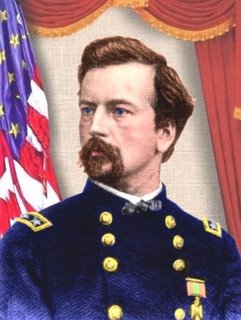
Union General Alexander Stewart Webb is born in New York City.
Webb's grandfather had fought at Bunker Hill during the American Revolution, and his father, James Watson Webb, was a prominent newspaper editor and diplomat who served as minister to Brazil during the Civil War. The younger Webb, known as Andy to his family, attended West Point and graduated in 1855, 13th in a class of 34. He taught mathematics at West Point and in Florida before the Civil War.
When the war broke out, Webb was assigned to defend Ft. Pickens, Florida, but was soon called to Washington and placed in the artillery in the army guarding the capital. He fought at the First Battle of Bull Run in July 1861 as assistant to the chief of artillery, Major William Barry. A year later, Webb was in charge of the artillery at the Battle of Malvern Hill at the end of the Seven Days battles. In that engagement, Union cannon devastated attacking Confederate infantry, and Webb was commended for leading the artillery line. General Daniel Butterfield later said that Webb's leadership saved the Union army from destruction.
Despite his numerous achievements, Webb was constantly passed over for promotion due to politics within the Army of the Potomac. He was closely associated with General George McClellan, and McClellan's removal in late 1862 left Webb stalled at colonel. Even some of his West Point students became generals before Webb, but the promotion finally came in June 1863. The new brigadier general played a key role at the Battle of Gettysburg just a few weeks later. On July 3, Webb commanded troops defending the center of the Union line on Cemetery Ridge. He rallied his troops as they received the brunt of Pickett's Charge, and his actions earned him the Congressional Medal of Honor.
Webb fought with the Army of the Potomac during the great campaign in the spring of 1864, and he was wounded in the head at the Bloody Angle, the most vicious fighting in the Battle of Spotsylvania. He was out of action for nearly eight months. When he returned, he became chief of staff for army commander General George Meade. After the war, Webb taught at West Point, served as president of the College of the City of New York, and wrote extensively about the war. He died in Riverdale, New York, in 1911. A statue of Webb adorns the Gettysburg battlefield near the spot where he earned the Medal of Honor.

Union General Alexander Stewart Webb is born in New York City.
Webb's grandfather had fought at Bunker Hill during the American Revolution, and his father, James Watson Webb, was a prominent newspaper editor and diplomat who served as minister to Brazil during the Civil War. The younger Webb, known as Andy to his family, attended West Point and graduated in 1855, 13th in a class of 34. He taught mathematics at West Point and in Florida before the Civil War.
When the war broke out, Webb was assigned to defend Ft. Pickens, Florida, but was soon called to Washington and placed in the artillery in the army guarding the capital. He fought at the First Battle of Bull Run in July 1861 as assistant to the chief of artillery, Major William Barry. A year later, Webb was in charge of the artillery at the Battle of Malvern Hill at the end of the Seven Days battles. In that engagement, Union cannon devastated attacking Confederate infantry, and Webb was commended for leading the artillery line. General Daniel Butterfield later said that Webb's leadership saved the Union army from destruction.
Despite his numerous achievements, Webb was constantly passed over for promotion due to politics within the Army of the Potomac. He was closely associated with General George McClellan, and McClellan's removal in late 1862 left Webb stalled at colonel. Even some of his West Point students became generals before Webb, but the promotion finally came in June 1863. The new brigadier general played a key role at the Battle of Gettysburg just a few weeks later. On July 3, Webb commanded troops defending the center of the Union line on Cemetery Ridge. He rallied his troops as they received the brunt of Pickett's Charge, and his actions earned him the Congressional Medal of Honor.
Webb fought with the Army of the Potomac during the great campaign in the spring of 1864, and he was wounded in the head at the Bloody Angle, the most vicious fighting in the Battle of Spotsylvania. He was out of action for nearly eight months. When he returned, he became chief of staff for army commander General George Meade. After the war, Webb taught at West Point, served as president of the College of the City of New York, and wrote extensively about the war. He died in Riverdale, New York, in 1911. A statue of Webb adorns the Gettysburg battlefield near the spot where he earned the Medal of Honor.
14 February 2006
The Cost of the Civil War
The approximately 10,455 military engagements of the American Civil War, including naval clashes, accidents, suicides, sicknesses, murders, and executions resulted in total casualties of 1,094,453 during the Civil War. The Union lost 110,100 killed in action and mortally wounded, and another 224,580 to disease. The Rebels lost approximately 94,000 as a result of battle and another 164,000 to disease. Even if a soldier were to survive a wound, any bullet, shrapnel, or foreign invader that hit bone in either an arm or a leg almost invariably necessitated amputation. The best estimate of Union army personnel wounded is 275,175; naval personnel wounded, 2,226. Surviving CSA records indicate 194,026 wounded.
In dollars and cents, the U.S. government estimated in January, 1863 (2005) that the war was costing $2.5 million($46,225,594.27) daily. A final official estimate in 1879 totaled $6,190,000,000 ($118,404,076,787.84). The Confederacy spent perhaps $2,099,808,707 ($40,165,736,895.54). By 1906 another $3.3 billion ($73,884,852,989.23 ) already had been spent by the U.S. government on Northerners' pensions and other veterans' benefits for former Federal soldiers. Southern states and private philanthropy provided benefits to the Confederate veterans. The amount spent on benefits eventually well exceeded the war's original cost.
Inflation affected both Northern and Southern assets but hit those of the Confederacy harder. Northern currency fluctuated in value, and at its lowest point $2.59 ($30.58) in Federal paper money equaled $1 ($11.81) in gold. The Confederate currency so declined in purchasing power that eventually $60-$70 ($767.52) equaled a gold dollar ($11.81).
The physical devastation, almost all of it in the South, was enormous: burned or plundered homes, pillaged countryside, untold losses in crops and farm animals, ruined buildings and bridges, devastated college campuses, and neglected roads all left the South in ruins.
Some of the figures from the reading, converted to today's dollar:
National Income, 1861: $4,300,000,000 Today: $88,333,412,601.41
Per Capita Income, 1861: $140 Today: $2,875.97
National Debt, 1865: $2,600,000,000 Today: $30,700,754,219.75
Amount Received From Loans, 1865: $2,600,000,000 Today: $30,700,754,219.75
Amount of Taxes Received, 1865: $667,000,000 Today: $7,875,924,255.60
Government Bonds Sold by Jay Cooke, 1861: $320,000,000 Today: $6,573,649,309.87
Profit for Jay Cooke, 1861: $800,000 Today: 16,434,123.27
Soldiers Pay, 1861: $11.00 per Month Today: $225.97
Soldiers Pay, Black, 1861: $8.00 Today: $164.34
In dollars and cents, the U.S. government estimated in January, 1863 (2005) that the war was costing $2.5 million($46,225,594.27) daily. A final official estimate in 1879 totaled $6,190,000,000 ($118,404,076,787.84). The Confederacy spent perhaps $2,099,808,707 ($40,165,736,895.54). By 1906 another $3.3 billion ($73,884,852,989.23 ) already had been spent by the U.S. government on Northerners' pensions and other veterans' benefits for former Federal soldiers. Southern states and private philanthropy provided benefits to the Confederate veterans. The amount spent on benefits eventually well exceeded the war's original cost.
Inflation affected both Northern and Southern assets but hit those of the Confederacy harder. Northern currency fluctuated in value, and at its lowest point $2.59 ($30.58) in Federal paper money equaled $1 ($11.81) in gold. The Confederate currency so declined in purchasing power that eventually $60-$70 ($767.52) equaled a gold dollar ($11.81).
The physical devastation, almost all of it in the South, was enormous: burned or plundered homes, pillaged countryside, untold losses in crops and farm animals, ruined buildings and bridges, devastated college campuses, and neglected roads all left the South in ruins.
Some of the figures from the reading, converted to today's dollar:
National Income, 1861: $4,300,000,000 Today: $88,333,412,601.41
Per Capita Income, 1861: $140 Today: $2,875.97
National Debt, 1865: $2,600,000,000 Today: $30,700,754,219.75
Amount Received From Loans, 1865: $2,600,000,000 Today: $30,700,754,219.75
Amount of Taxes Received, 1865: $667,000,000 Today: $7,875,924,255.60
Government Bonds Sold by Jay Cooke, 1861: $320,000,000 Today: $6,573,649,309.87
Profit for Jay Cooke, 1861: $800,000 Today: 16,434,123.27
Soldiers Pay, 1861: $11.00 per Month Today: $225.97
Soldiers Pay, Black, 1861: $8.00 Today: $164.34
Today in Civil War History
1864 Sherman enters Meridian, Mississippi
Union General William T. Sherman enters Meridian, Mississippi, during a winter campaign that served as a precursor to Sherman's "March to the Sea." This often-overlooked campaign was the first attempt by the Union at total warfare, a strike aimed not just at military objectives but also at the will of the southern people.
Sherman launched the campaign from Vicksburg, Mississippi, with the goal of destroying the rail center at Meridian and clearing central Mississippi of Confederate resistance. Sherman believed this would free additional Federal troops that he hoped to use on his planned campaign against Atlanta, Georgia, in the following months.
Sherman led 25,000 troops east from Vicksburg and ordered another 7,000 under General William Sooy Smith to march southeast from Memphis, Tennessee. They planned to meet at Meridian in eastern Mississippi. The Confederates had few troops with which to stop Sherman. General Leonidas Polk had less than 10,000 men to defend the state. Polk retreated from the capital at Jackson as Sherman approached, and some scattered cavalry units could not impede the Yankees' progress. Polk tried to block the roads to Meridian so the Confederates could move as many supplies as possible from the city's warehouses, but Sherman pushed into the city on February 14 in the middle of a torrential rain.
After capturing Meridian, Sherman began to destroy the railroad and storage facilities while he waited for the arrival of Smith. Sherman later wrote: "For five days, 10,000 men worked hard and with a will in that work of destruction...Meridian, with its depots, storehouses, arsenals, hospitals, offices, hotels, and cantonments no longer exists." Sherman waited until February 20 for Smith to arrive, but Smith never reached Meridian. On February 21, Confederate troops under General Nathan Bedford Forrest waylaid Smith at West Point, Mississippi, and dealt the Federals a resounding defeat. Smith returned to Memphis, and Sherman turned back towards Vicksburg.
Ultimately, Sherman failed to clear Mississippi of Rebels, and the Confederates repaired the rail lines within a month. Sherman did learn how to live off the land, however, and took notes on how to strike a blow against the civilian population of the South. He used that knowledge with devastating results in Georgia later that year.
Union General William T. Sherman enters Meridian, Mississippi, during a winter campaign that served as a precursor to Sherman's "March to the Sea." This often-overlooked campaign was the first attempt by the Union at total warfare, a strike aimed not just at military objectives but also at the will of the southern people.
Sherman launched the campaign from Vicksburg, Mississippi, with the goal of destroying the rail center at Meridian and clearing central Mississippi of Confederate resistance. Sherman believed this would free additional Federal troops that he hoped to use on his planned campaign against Atlanta, Georgia, in the following months.
Sherman led 25,000 troops east from Vicksburg and ordered another 7,000 under General William Sooy Smith to march southeast from Memphis, Tennessee. They planned to meet at Meridian in eastern Mississippi. The Confederates had few troops with which to stop Sherman. General Leonidas Polk had less than 10,000 men to defend the state. Polk retreated from the capital at Jackson as Sherman approached, and some scattered cavalry units could not impede the Yankees' progress. Polk tried to block the roads to Meridian so the Confederates could move as many supplies as possible from the city's warehouses, but Sherman pushed into the city on February 14 in the middle of a torrential rain.
After capturing Meridian, Sherman began to destroy the railroad and storage facilities while he waited for the arrival of Smith. Sherman later wrote: "For five days, 10,000 men worked hard and with a will in that work of destruction...Meridian, with its depots, storehouses, arsenals, hospitals, offices, hotels, and cantonments no longer exists." Sherman waited until February 20 for Smith to arrive, but Smith never reached Meridian. On February 21, Confederate troops under General Nathan Bedford Forrest waylaid Smith at West Point, Mississippi, and dealt the Federals a resounding defeat. Smith returned to Memphis, and Sherman turned back towards Vicksburg.
Ultimately, Sherman failed to clear Mississippi of Rebels, and the Confederates repaired the rail lines within a month. Sherman did learn how to live off the land, however, and took notes on how to strike a blow against the civilian population of the South. He used that knowledge with devastating results in Georgia later that year.
13 February 2006
Today in Civil War History
1831 John Rawlins born
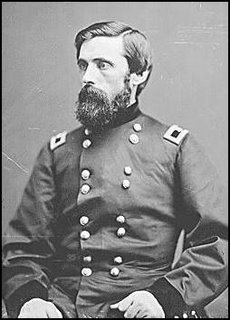
Union General John Rawlins is born in Galena, Illinois. Rawlins was a close personal aide to General Ulysses S. Grant and was reported to have kept Grant from drinking heavily during the war.
Rawlins' family was originally from Virginia but had settled in Illinois shortly before Rawlins' birth. When Rawlins was a teenager, his father abandoned the family and headed for the gold fields of California. The younger Rawlins received little formal education, but he studied law and was admitted to the Illinois bar in 1854. He became the city attorney in 1857 and became involved in state politics. He was an avid supporter of Senator Stephen Douglas and served as an elector for Douglas in 1860.
When the war began, Rawlins became the aide de camp to Grant. He was Grant's principle staff officer throughout the war, and Grant said that Rawlins was nearly indispensable. Grant was known to be a heavy drinker when he served on the frontier in the 1850s, and there were rumors that he continued to drink during the early stages of the war. Rawlins appears to have been instrumental in keeping Grant from imbibing during the Civil War.
After the war, Rawlins served in the west. He helped General Greenville Dodge survey the route for the Union Pacific Railroad, which later became part of the first transcontinental line. For his efforts, the town of Rawlins, Wyoming, was named after him. When Grant became president in 1869, Rawlins became secretary of war. His health declined after taking office, and he died just six months later. Rawlins is buried in Arlington Cemetery.

Union General John Rawlins is born in Galena, Illinois. Rawlins was a close personal aide to General Ulysses S. Grant and was reported to have kept Grant from drinking heavily during the war.
Rawlins' family was originally from Virginia but had settled in Illinois shortly before Rawlins' birth. When Rawlins was a teenager, his father abandoned the family and headed for the gold fields of California. The younger Rawlins received little formal education, but he studied law and was admitted to the Illinois bar in 1854. He became the city attorney in 1857 and became involved in state politics. He was an avid supporter of Senator Stephen Douglas and served as an elector for Douglas in 1860.
When the war began, Rawlins became the aide de camp to Grant. He was Grant's principle staff officer throughout the war, and Grant said that Rawlins was nearly indispensable. Grant was known to be a heavy drinker when he served on the frontier in the 1850s, and there were rumors that he continued to drink during the early stages of the war. Rawlins appears to have been instrumental in keeping Grant from imbibing during the Civil War.
After the war, Rawlins served in the west. He helped General Greenville Dodge survey the route for the Union Pacific Railroad, which later became part of the first transcontinental line. For his efforts, the town of Rawlins, Wyoming, was named after him. When Grant became president in 1869, Rawlins became secretary of war. His health declined after taking office, and he died just six months later. Rawlins is buried in Arlington Cemetery.
12 February 2006
Today in Civil War History
1828 Robert Ransom is born
Confederate General Robert Ransom, Jr., is born in Warren County, North Carolina.
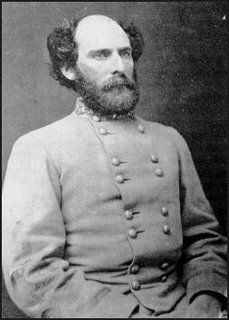
Ransom attended West Point, graduating 18th out of 44 in 1850. For the next decade, he served on the frontier and as an instructor at his alma mater. Ransom was in Kansas during the violent clashes between pro- and anti-slave forces after the creation of the territory in 1854. He was a captain when North Carolina seceded in April 1861, receiving the same rank in the Confederate cavalry.
Within a year, Ransom was a brigadier general serving in North Carolina, where he saw action against Union coastal raiders near Goldsboro. He was transferred to Virginia to defend Richmond, and his unit fought during the Seven Days battles in June and July 1862. Ransom commanded a brigade at Antietam in September, and a division at Fredericksburg in December. He returned to command troops in North Carolina in early 1863 and earned a promotion to major general. He next commanded the District of Southeast Virginia, where his troops guarded the railroads serving the capital at Richmond.
Ransom went to Tennessee in the fall of 1863 with General James Longstreet during the attempt to save Tennessee from the Yankees. He fought at Chickamauga and the Knoxville campaign with Longstreet before returning to command the Richmond defenses in 1864. He commanded a force that faced Union General Benjamin Butler southeast of the city, and his leadership helped bottle Butler's force inside of a bend in the James River called the Bermuda Hundred. That summer, Ransom served with General Jubal Early during the Shenandoah Valley campaign. He ended the war commanding troops at Charleston, South Carolina.
Ransom worked as a civil engineer and a farmer in his home state after the war, and he died at New Bern, North Carolina, in 1892.
Confederate General Robert Ransom, Jr., is born in Warren County, North Carolina.

Ransom attended West Point, graduating 18th out of 44 in 1850. For the next decade, he served on the frontier and as an instructor at his alma mater. Ransom was in Kansas during the violent clashes between pro- and anti-slave forces after the creation of the territory in 1854. He was a captain when North Carolina seceded in April 1861, receiving the same rank in the Confederate cavalry.
Within a year, Ransom was a brigadier general serving in North Carolina, where he saw action against Union coastal raiders near Goldsboro. He was transferred to Virginia to defend Richmond, and his unit fought during the Seven Days battles in June and July 1862. Ransom commanded a brigade at Antietam in September, and a division at Fredericksburg in December. He returned to command troops in North Carolina in early 1863 and earned a promotion to major general. He next commanded the District of Southeast Virginia, where his troops guarded the railroads serving the capital at Richmond.
Ransom went to Tennessee in the fall of 1863 with General James Longstreet during the attempt to save Tennessee from the Yankees. He fought at Chickamauga and the Knoxville campaign with Longstreet before returning to command the Richmond defenses in 1864. He commanded a force that faced Union General Benjamin Butler southeast of the city, and his leadership helped bottle Butler's force inside of a bend in the James River called the Bermuda Hundred. That summer, Ransom served with General Jubal Early during the Shenandoah Valley campaign. He ended the war commanding troops at Charleston, South Carolina.
Ransom worked as a civil engineer and a farmer in his home state after the war, and he died at New Bern, North Carolina, in 1892.
11 February 2006
Today in Civil War History
1861 Lincoln leaves Springfield
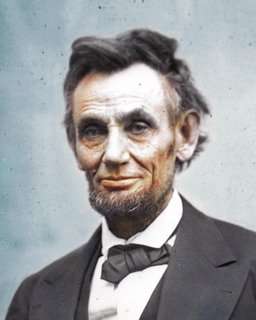
President-elect Abraham Lincoln leaves home in Springfield, Illinois, as he embarks on his journey to Washington.
On a cold, rainy morning, Lincoln boarded a two-car private train loaded with his family's belongings, which he himself had packed and bound. Mary Lincoln was in St. Louis on a shopping trip, and she joined him later in Indiana. It was a somber occasion. Lincoln was leaving his home and heading into the maw of national crisis. Since he had been elected, seven states of the lower South had seceded from the Union. Lincoln knew that his actions upon entering office would likely lead to civil war. He spoke to the crowd before departing: "Here I have lived a quarter of a century, and have passed from a young man to an old man. Here my children have been born, and one is buried. I now leave, not knowing when, or whether ever, I may return, with a task before me greater than that which rested upon Washington. Without the assistance of that Divine Being...I cannot succeed. With that assistance, I cannot fail...To His care commending you, as I hope in your prayers you will commend me, I bid you an affectionate farewell."
A bystander reported that the president-elect's "breast heaved with emotion and he could scarcely command his feelings." Indeed, Lincoln's words were prophetic--a funeral train carried him back to Springfield just over four years later.

President-elect Abraham Lincoln leaves home in Springfield, Illinois, as he embarks on his journey to Washington.
On a cold, rainy morning, Lincoln boarded a two-car private train loaded with his family's belongings, which he himself had packed and bound. Mary Lincoln was in St. Louis on a shopping trip, and she joined him later in Indiana. It was a somber occasion. Lincoln was leaving his home and heading into the maw of national crisis. Since he had been elected, seven states of the lower South had seceded from the Union. Lincoln knew that his actions upon entering office would likely lead to civil war. He spoke to the crowd before departing: "Here I have lived a quarter of a century, and have passed from a young man to an old man. Here my children have been born, and one is buried. I now leave, not knowing when, or whether ever, I may return, with a task before me greater than that which rested upon Washington. Without the assistance of that Divine Being...I cannot succeed. With that assistance, I cannot fail...To His care commending you, as I hope in your prayers you will commend me, I bid you an affectionate farewell."
A bystander reported that the president-elect's "breast heaved with emotion and he could scarcely command his feelings." Indeed, Lincoln's words were prophetic--a funeral train carried him back to Springfield just over four years later.
10 February 2006
Today in Civil War History
1861 Davis learns he is president

Jefferson Davis receives word that he has been selected president of the new Confederate States of America.
Davis was at his plantation, Brierfield, pruning rose bushes with his wife Varina when a messenger arrived from nearby Vicksburg. It was not a job he wanted, but he accepted it out of a sense of duty to his new country. Varina later wrote that she saw her husband's face grow pale and she recalled, "Reading that telegram he looked so grieved that I feared some evil had befallen our family. After a few minutes he told me like a man might speak of a sentence of death."
Davis said of the job: "I have no confidence in my ability to meet its requirement. I think I could perform the function of a general." He could see the difficulties involved in launching the new nation. "Upon my weary heart was showered smiles, plaudits, and flowers, but beyond them I saw troubles innumerable. We are without machinery, without means, and threatened by powerful opposition but I do not despond and will not shrink from the task before me."
Davis was prescient in his concerns. He drew sharp criticism during the war--Alexander Stephens, the vice president, said Davis was "weak and vacillating, timid, petulant, peevish, obstinate," and Stephens declared that he held "no more feeling of resentment toward him" than he did toward his "poor old blind and deaf dog."

Jefferson Davis receives word that he has been selected president of the new Confederate States of America.
Davis was at his plantation, Brierfield, pruning rose bushes with his wife Varina when a messenger arrived from nearby Vicksburg. It was not a job he wanted, but he accepted it out of a sense of duty to his new country. Varina later wrote that she saw her husband's face grow pale and she recalled, "Reading that telegram he looked so grieved that I feared some evil had befallen our family. After a few minutes he told me like a man might speak of a sentence of death."
Davis said of the job: "I have no confidence in my ability to meet its requirement. I think I could perform the function of a general." He could see the difficulties involved in launching the new nation. "Upon my weary heart was showered smiles, plaudits, and flowers, but beyond them I saw troubles innumerable. We are without machinery, without means, and threatened by powerful opposition but I do not despond and will not shrink from the task before me."
Davis was prescient in his concerns. He drew sharp criticism during the war--Alexander Stephens, the vice president, said Davis was "weak and vacillating, timid, petulant, peevish, obstinate," and Stephens declared that he held "no more feeling of resentment toward him" than he did toward his "poor old blind and deaf dog."
09 February 2006
A Letter to Jefferson Davis
To: Jefferson Davis
Subject: Comments to your speech of January 12, 1863
Dear President Davis,
In regard to your speech before the Confederate Congress criticizing Europe for our inability to recognize the Confederate States of America, it seems almost certain that the act of emancipation by President Lincoln has made it difficult, if not impossible, for England or France to officially recognize the Confederacy in view of the antislavery sentiments among our home populations, especially here in England. Your defeat September last at Antietam has lessened our confidence that your army has the means and manpower to defeat the United States. It was very possible that France, England, and perhaps even Russia would have recognized the new country if you had been victorious. Our navies would have no problem breaking the Union blockade that has hampered trade, in particular exporting the cotton needed for our mills and to deliver highly profitable war materials to you. France, who already has troops in Mexico, may have even provided ground forces to support the South. Unfortunately, this will not be happening. We shall keep an eye on developments as time passes, but at this time we have no intention of any recognition. In the meantime, I have made arrangements for Captain and Colonel Arthur J.L. Fremantle of the Queen's Coldstream Guards to privately "vacation" in the Confederate States. He will not be on any official business, but may opt to observe your army. Expect his arrival sometime around April 2 of this year.
Sincerly,
Sir Roundell Palmer
Her Majesty's Solicitor General for England and Wales
Subject: Comments to your speech of January 12, 1863
Dear President Davis,
In regard to your speech before the Confederate Congress criticizing Europe for our inability to recognize the Confederate States of America, it seems almost certain that the act of emancipation by President Lincoln has made it difficult, if not impossible, for England or France to officially recognize the Confederacy in view of the antislavery sentiments among our home populations, especially here in England. Your defeat September last at Antietam has lessened our confidence that your army has the means and manpower to defeat the United States. It was very possible that France, England, and perhaps even Russia would have recognized the new country if you had been victorious. Our navies would have no problem breaking the Union blockade that has hampered trade, in particular exporting the cotton needed for our mills and to deliver highly profitable war materials to you. France, who already has troops in Mexico, may have even provided ground forces to support the South. Unfortunately, this will not be happening. We shall keep an eye on developments as time passes, but at this time we have no intention of any recognition. In the meantime, I have made arrangements for Captain and Colonel Arthur J.L. Fremantle of the Queen's Coldstream Guards to privately "vacation" in the Confederate States. He will not be on any official business, but may opt to observe your army. Expect his arrival sometime around April 2 of this year.
Sincerly,
Sir Roundell Palmer
Her Majesty's Solicitor General for England and Wales
Today in Civil War History
1864 George Custer married
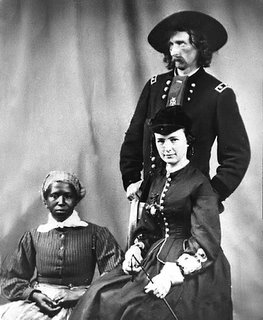
Union General George Armstrong Custer marries Elizabeth Bacon in Monroe, Michigan, while the young cavalry officer is on leave. "Libbie," as she was known to her family, was a tireless defender of her husband's reputation after his death at the Battle of the Little Big Horn in 1876, and her work helped establish him as an American hero.
The two met in November 1862 at a party in Monroe. They courted while George was on winter furlough. After he retuned to service in 1863, Custer became, at 23 years old, the youngest general in the Union army. George and Libbie continued their correspondence, and when he returned to Monroe that winter, their relationship intensified. George recognized that Libbie's good judgment balanced the young general's brash and impulsive behavior. They were engaged by Christmas.
The bride wore a white satin dress for the nuptials, which were held in Monroe's packed First Presbyterian Church. They honeymooned in New York, where they visited West Point, Custer's alma mater. After spending time in New York City, they settled in Washington and the attractive couple soon became darlings of the social scene. While her husband was in the field, Libbie worked to advance his career by hobnobbing with prominent Republican politicians. Her influence with some prominent members of Congress was helpful, and possible crucial, for Custer's promotion to major general on April 15, 1865.
After the war, Custer became a lieutenant colonel in the downsized postwar frontier army. On June 25, 1876, he and the 210 men under his command were wiped out by Lakota and Northern Cheyenne Indians at the Battle of the Little Big Horn in Montana. Libbie spent the remainder of her life building Custer's reputation and defending his actions during his last battle. Not until after her death in 1933 did the first iconoclastic biography of her husband appear. The enduring legend of George Custer was due in large part to the tireless efforts of his widow.

Union General George Armstrong Custer marries Elizabeth Bacon in Monroe, Michigan, while the young cavalry officer is on leave. "Libbie," as she was known to her family, was a tireless defender of her husband's reputation after his death at the Battle of the Little Big Horn in 1876, and her work helped establish him as an American hero.
The two met in November 1862 at a party in Monroe. They courted while George was on winter furlough. After he retuned to service in 1863, Custer became, at 23 years old, the youngest general in the Union army. George and Libbie continued their correspondence, and when he returned to Monroe that winter, their relationship intensified. George recognized that Libbie's good judgment balanced the young general's brash and impulsive behavior. They were engaged by Christmas.
The bride wore a white satin dress for the nuptials, which were held in Monroe's packed First Presbyterian Church. They honeymooned in New York, where they visited West Point, Custer's alma mater. After spending time in New York City, they settled in Washington and the attractive couple soon became darlings of the social scene. While her husband was in the field, Libbie worked to advance his career by hobnobbing with prominent Republican politicians. Her influence with some prominent members of Congress was helpful, and possible crucial, for Custer's promotion to major general on April 15, 1865.
After the war, Custer became a lieutenant colonel in the downsized postwar frontier army. On June 25, 1876, he and the 210 men under his command were wiped out by Lakota and Northern Cheyenne Indians at the Battle of the Little Big Horn in Montana. Libbie spent the remainder of her life building Custer's reputation and defending his actions during his last battle. Not until after her death in 1933 did the first iconoclastic biography of her husband appear. The enduring legend of George Custer was due in large part to the tireless efforts of his widow.
08 February 2006
Today in Civil War History
1862 Battle of Roanoke Island
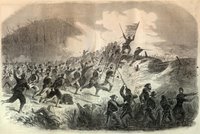
Union General Ambrose Burnside scores a major victory when he captures Roanoke Island in North Carolina. The victory was one of the first major Union victories of the war and it gave the Yankees control of the mouth of Albemarle Sound, a key Confederate bay that allowed the Union to threaten the Rebel capital of Richmond from the south.
During the war's first winter, Union strategists focused their efforts on capturing coastal defenses to deny the Confederates sea outlets. In August 1861, the Yankees took two key forts on North Carolina's Outer Banks, paving the way for the campaign against Roanoke Island. On January 11, 1862, Burnside took a force of 15,000 and a flotilla of 80 ships down to the Outer Banks. The expeditionary force arrived at Hatteras Inlet on January 13, but poor weather delayed an attack for three weeks. On February 7, Burnside landed 10,000 on the island. They were met by about 2,500 Confederates. Burnside attacked, and his force overwhelmed the outer defenses of the island. Confederate commander Colonel Henry Shaw retreated to the north end of the island but had no chance to escape. Shaw surrendered the entire force.
The Yankees suffered 37 men killed and 214 wounded, while the Confederates lost 23 men killed and 62 wounded before the surrender. The Union now controlled a vital section of the coast. The victory came two days after Union General Ulysses S. Grant captured Fort Henry in northern Tennessee, and, for the first time in the war, the North had reason for optimism.

Union General Ambrose Burnside scores a major victory when he captures Roanoke Island in North Carolina. The victory was one of the first major Union victories of the war and it gave the Yankees control of the mouth of Albemarle Sound, a key Confederate bay that allowed the Union to threaten the Rebel capital of Richmond from the south.
During the war's first winter, Union strategists focused their efforts on capturing coastal defenses to deny the Confederates sea outlets. In August 1861, the Yankees took two key forts on North Carolina's Outer Banks, paving the way for the campaign against Roanoke Island. On January 11, 1862, Burnside took a force of 15,000 and a flotilla of 80 ships down to the Outer Banks. The expeditionary force arrived at Hatteras Inlet on January 13, but poor weather delayed an attack for three weeks. On February 7, Burnside landed 10,000 on the island. They were met by about 2,500 Confederates. Burnside attacked, and his force overwhelmed the outer defenses of the island. Confederate commander Colonel Henry Shaw retreated to the north end of the island but had no chance to escape. Shaw surrendered the entire force.
The Yankees suffered 37 men killed and 214 wounded, while the Confederates lost 23 men killed and 62 wounded before the surrender. The Union now controlled a vital section of the coast. The victory came two days after Union General Ulysses S. Grant captured Fort Henry in northern Tennessee, and, for the first time in the war, the North had reason for optimism.
07 February 2006
Today in Civil War History
1862 Confederates order reinforcements to Fort Donelson
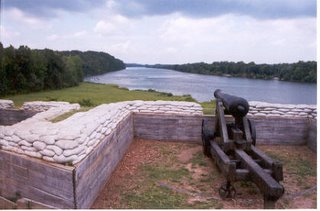
One day after the fall of Fort Henry on the Tennessee River, Confederate General Albert Sidney Johnston, commander of Rebel forces in the west, orders 15,000 reinforcements to Fort Donelson. This fort lay on the Cumberland River just a few miles from Fort Henry. Johnston's decision turned out to be a mistake, as many of the troops were captured when the Fort Donelson fell to the Yankees on February 16.
During the fall and winter of 1861 to 1862, the Union army and navy penetrated through Kentucky and into Tennessee. Led by General Ulysses S. Grant, the Yankees were gaining crucial advantages by controlling parts of the major rivers in the upper South. Johnston sought to stop the bleeding of lost Confederate territory by strengthening the garrison inside Fort Donelson. In retrospect, his mistake was in not providing enough support to Donelson. Johnston wanted to buy time so he could gather his forces from eastern Kentucky and Tennessee to Nashville, which lay south and east of Fort Donelson. If Johnston had concentrated his force at Donelson, he would have had a significant advantage over Grant. Instead, Grant surrounded the fort and sent a squadron to attack from the river. On February 16, the Yankees cut off the fort from the south and forced the surrender of 15,000 Confederates.
After the fall of Fort Donelson, Johnston gathered his remaining forces to northern Mississippi. On April 6 at Shiloh, the western armies clashed in one of the most destructive battles of the war. Johnston was killed in the Confederate defeat.

One day after the fall of Fort Henry on the Tennessee River, Confederate General Albert Sidney Johnston, commander of Rebel forces in the west, orders 15,000 reinforcements to Fort Donelson. This fort lay on the Cumberland River just a few miles from Fort Henry. Johnston's decision turned out to be a mistake, as many of the troops were captured when the Fort Donelson fell to the Yankees on February 16.
During the fall and winter of 1861 to 1862, the Union army and navy penetrated through Kentucky and into Tennessee. Led by General Ulysses S. Grant, the Yankees were gaining crucial advantages by controlling parts of the major rivers in the upper South. Johnston sought to stop the bleeding of lost Confederate territory by strengthening the garrison inside Fort Donelson. In retrospect, his mistake was in not providing enough support to Donelson. Johnston wanted to buy time so he could gather his forces from eastern Kentucky and Tennessee to Nashville, which lay south and east of Fort Donelson. If Johnston had concentrated his force at Donelson, he would have had a significant advantage over Grant. Instead, Grant surrounded the fort and sent a squadron to attack from the river. On February 16, the Yankees cut off the fort from the south and forced the surrender of 15,000 Confederates.
After the fall of Fort Donelson, Johnston gathered his remaining forces to northern Mississippi. On April 6 at Shiloh, the western armies clashed in one of the most destructive battles of the war. Johnston was killed in the Confederate defeat.
06 February 2006
Today in Civil War History
1865 Confederate General John Pegram is killed at the Battle of Dabney's Mill, Virginia.
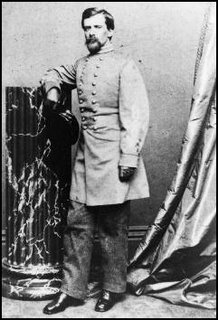
Pegram graduated from West Point in 1854, 10th in a class of 46. He served in various posts in the west before resigning his commission at the start of the Civil War. Pegram then received an appointment as a lieutenant colonel in the Confederate army. Sent to fight in western Virginia during the summer of 1861, he was captured by General George McClellan's men at the Battle of Rich Mountain. Pegram was exchanged in April 1862 and sent to serve with General Pierre G. T. Beauregard in Mississippi. He fought in Tennessee and Kentucky and earned a promotion to brigadier general. After the Battle of Chickamauga in September 1863, Pegram was transferred to General Robert E. Lee's Army of Northern Virginia. He was wounded at the Battle of the Wilderness in May 1864, but recovered to fight with General Jubal Early during the Shenandoah Valley campaign in the summer of 1864. That fall, he was sent to defend his native city of Petersburg.
On January 19, Pegram married Hetty Cary, a prominent Richmond socialite who many called the "handsomest women in the Southland." Even in the gloom of the ongoing siege, the ceremony was a grand affair attended by nearly all of the high-ranking Confederates, including President Jefferson Davis and his wife, Varina. The bride, commented onlookers, was a vision of beauty and one said that the "happy gleam of her beautiful brown eyes seemed to defy all sorrow." Just three weeks later, Pegram's body was returned to the same church, St. Paul's Episcopal, and his young widow knelt beside his coffin as the minister who married them presided over the dashing general's funeral.
1862 General Ulysses S. Grant captures Fort Henry

General Ulysses S. Grant provides the first major Union victory of the war when he captures Fort Henry on the Tennessee River. Ten days later, he captured Fort Donelson on the Cumberland River, which gave the Yankees control of northern Tennessee and paved the way for the occupation of Nashville.

Pegram graduated from West Point in 1854, 10th in a class of 46. He served in various posts in the west before resigning his commission at the start of the Civil War. Pegram then received an appointment as a lieutenant colonel in the Confederate army. Sent to fight in western Virginia during the summer of 1861, he was captured by General George McClellan's men at the Battle of Rich Mountain. Pegram was exchanged in April 1862 and sent to serve with General Pierre G. T. Beauregard in Mississippi. He fought in Tennessee and Kentucky and earned a promotion to brigadier general. After the Battle of Chickamauga in September 1863, Pegram was transferred to General Robert E. Lee's Army of Northern Virginia. He was wounded at the Battle of the Wilderness in May 1864, but recovered to fight with General Jubal Early during the Shenandoah Valley campaign in the summer of 1864. That fall, he was sent to defend his native city of Petersburg.
On January 19, Pegram married Hetty Cary, a prominent Richmond socialite who many called the "handsomest women in the Southland." Even in the gloom of the ongoing siege, the ceremony was a grand affair attended by nearly all of the high-ranking Confederates, including President Jefferson Davis and his wife, Varina. The bride, commented onlookers, was a vision of beauty and one said that the "happy gleam of her beautiful brown eyes seemed to defy all sorrow." Just three weeks later, Pegram's body was returned to the same church, St. Paul's Episcopal, and his young widow knelt beside his coffin as the minister who married them presided over the dashing general's funeral.
1862 General Ulysses S. Grant captures Fort Henry

General Ulysses S. Grant provides the first major Union victory of the war when he captures Fort Henry on the Tennessee River. Ten days later, he captured Fort Donelson on the Cumberland River, which gave the Yankees control of northern Tennessee and paved the way for the occupation of Nashville.
05 February 2006
Baltimore Riots, 1861
Once Southern states began seceding, and tensions heightened, towns and cities across Massachusetts began to form volunteer militia units. Among the first militia units to form were mill workers from the textile cities of Lowell and Lawrence, who were christened the Sixth Massachusetts Volunteer Militia upon its formal organization on January 21, 1861. It was mustered in with the understanding they would be a 3-month militia, once called to action.
Two months of meetings and drills followed for the 6th Massachusetts. They were finally issued the blue suits and rifles made at the armory in Springfield, MA and told to be ready to mobilize at a moment’s notice, reminiscent of the Minutemen of 85 years previous. When Fort Sumter was attacked on April 12th, 1861, they understood that the moment had come.
On April 15, President Lincoln issued a call for 75,000 volunteers. The 6th Massachusetts was ordered to Washington, D.C. to help protect the capital and hopefully end the rebellion in quick fashion.
Maryland had not seceded from the Union but many citizens of Baltimore held sympathies for the Confederate cause were not happy that Union soldiers were in their city. As the men traveled by rail towards the nations’ capitol, the mood was one of eager anticipation. Things changed in an instant when the train pulled into the President Street Station of the Philadelphia, Wilmington, and Baltimore Railroad around noon on April 19th. The station they arrived at is where the P. W. and B. abruptly ends and continuing south required transit by horse drawn cars to the Baltimore and Ohio’s Camden Station, on the other side of town. The first nine cars had made it to the Camden Station with no problems, but a growing horde of unruly citizens began throwing stones and dumping sand and ship anchors onto the tracks, forcing the remaining cars to stop. The soldiers that were left at the President Street Station consisted of approximately four companies and the 6th Regimental Band, about 220 men, and a group of about 800 recruits from Pennsylvania with no uniforms, weapons, or even officers who had been commissioned officially yet. They were left with no choice but to get off the train and begin marching the rest of the way.
Colonel Edward F. Jones, the commander of the 6th, had been forewarned that the sentiment in Baltimore was Pro Southern and that their presence in the city was not going to be welcomed. His orders to the troops were to have their muskets loaded, but no one was to fire unless fired upon. As they attempted to make their way past the horde and through the city, the angry citizens began to taunt them and shout insults. The streets had been torn up by the mob and left in piles of stones, hitching posts and tree branches were turned in to clubs, and other various objects were turned into projectiles. Pistols began to be fired in the direction of the soldiers, in a mock warning. A Confederate flag appeared, cheers went up for Jefferson Davis and the frenzy grew larger. The Mayor of Baltimore, George William Brown, pleaded for calm, and for a moment, his request seemed to be heeded.
The stone throwing resumed however, and some scuffles began to break out. Citizens tried to unarm the soldiers. The men were ordered to march at the double quick in hopes of making it to the Camden station without being injured. This, of course, made them look like cowards running away from a fight. People initially satisfied with verbal taunts and mistreatment now were looking to end the soldiers’ lives. Who fired first is an unknown factor in the riot. Shots rang out from the sidewalks, rooftops, and from the ranks of soldiers. Police finally arrived on the scene, and order was restored, but not before the 6th Massachusetts suffered 4 deaths and 36 wounded. 130 soldiers were missing, but presumed to have run to the outskirts to avoid the riots. The recruits from Pennsylvania never made it to Washington. The Baltimore police sent them back to Philadelphia. The citizens of Baltimore had 12 dead, and numerous wounded. The first blood of the Civil War had been shed.
Two months of meetings and drills followed for the 6th Massachusetts. They were finally issued the blue suits and rifles made at the armory in Springfield, MA and told to be ready to mobilize at a moment’s notice, reminiscent of the Minutemen of 85 years previous. When Fort Sumter was attacked on April 12th, 1861, they understood that the moment had come.
On April 15, President Lincoln issued a call for 75,000 volunteers. The 6th Massachusetts was ordered to Washington, D.C. to help protect the capital and hopefully end the rebellion in quick fashion.
Maryland had not seceded from the Union but many citizens of Baltimore held sympathies for the Confederate cause were not happy that Union soldiers were in their city. As the men traveled by rail towards the nations’ capitol, the mood was one of eager anticipation. Things changed in an instant when the train pulled into the President Street Station of the Philadelphia, Wilmington, and Baltimore Railroad around noon on April 19th. The station they arrived at is where the P. W. and B. abruptly ends and continuing south required transit by horse drawn cars to the Baltimore and Ohio’s Camden Station, on the other side of town. The first nine cars had made it to the Camden Station with no problems, but a growing horde of unruly citizens began throwing stones and dumping sand and ship anchors onto the tracks, forcing the remaining cars to stop. The soldiers that were left at the President Street Station consisted of approximately four companies and the 6th Regimental Band, about 220 men, and a group of about 800 recruits from Pennsylvania with no uniforms, weapons, or even officers who had been commissioned officially yet. They were left with no choice but to get off the train and begin marching the rest of the way.
Colonel Edward F. Jones, the commander of the 6th, had been forewarned that the sentiment in Baltimore was Pro Southern and that their presence in the city was not going to be welcomed. His orders to the troops were to have their muskets loaded, but no one was to fire unless fired upon. As they attempted to make their way past the horde and through the city, the angry citizens began to taunt them and shout insults. The streets had been torn up by the mob and left in piles of stones, hitching posts and tree branches were turned in to clubs, and other various objects were turned into projectiles. Pistols began to be fired in the direction of the soldiers, in a mock warning. A Confederate flag appeared, cheers went up for Jefferson Davis and the frenzy grew larger. The Mayor of Baltimore, George William Brown, pleaded for calm, and for a moment, his request seemed to be heeded.
The stone throwing resumed however, and some scuffles began to break out. Citizens tried to unarm the soldiers. The men were ordered to march at the double quick in hopes of making it to the Camden station without being injured. This, of course, made them look like cowards running away from a fight. People initially satisfied with verbal taunts and mistreatment now were looking to end the soldiers’ lives. Who fired first is an unknown factor in the riot. Shots rang out from the sidewalks, rooftops, and from the ranks of soldiers. Police finally arrived on the scene, and order was restored, but not before the 6th Massachusetts suffered 4 deaths and 36 wounded. 130 soldiers were missing, but presumed to have run to the outskirts to avoid the riots. The recruits from Pennsylvania never made it to Washington. The Baltimore police sent them back to Philadelphia. The citizens of Baltimore had 12 dead, and numerous wounded. The first blood of the Civil War had been shed.
Today in Civil War History
1865 Battle of Dabney's Mill (Also known as Hatcher's Run, Rowanty Creek, Armstrong's Mill, Vaughan Road)
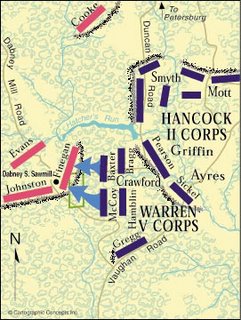
Union and Confederate forces around Petersburg, Virginia, begin a three-day battle that produces 3,000 casualties but ends with no significant advantage for either side.
Dabney's Mill was another attempt by Union General Ulysses S. Grant to break the siege of Petersburg and Richmond, Virginia. In 1864, Grant and Confederate General Robert E. Lee pounded each other as they wheeled south around the cities. After a month of heavy battling that produced the highest casualty rates of the war, Grant and Lee settled into trenches around Petersburg. These lines eventually stretched 25 miles to Richmond, and the stalemate continued for 10 months. Periodically, Grant mounted offensives either to break through Lee's lines or envelope the ends. In June, August, and October, these moves failed to extricate the Confederates from their trenches.
Now, Grant sent cavalry under General David Gregg to capture a road that carried supplies from Hicksford, Virginia, into Petersburg. On February 5, Gregg moved and captured a few wagons along his objective, the Boydton Plank Road. He found little else, so he pulled back toward the rest of the Union army. Yankee infantry under General Gouverneur K. Warren also moved forward and probed the area at the end of the Confederate's Petersburg line. The Rebels responded by moving troops into the area. Skirmishes erupted that evening and the fighting continued for two more days as each side maneuvered for an advantage. The fighting surged back and forth around Dabney's Mill, but the Yankees were never able to penetrate the Confederate lines. The Union suffered 2,000 men killed, wounded, or captured, while the Confederates lost about 1,000. The battle did extend the Petersburg line a few miles to further stretch Lee's thin lines, but the stalemate continued for six more weeks before Grant's forces finally sent Lee racing west with the remnants of his army. The chase ended in April when Lee surrendered at Appomattox Court House.

Union and Confederate forces around Petersburg, Virginia, begin a three-day battle that produces 3,000 casualties but ends with no significant advantage for either side.
Dabney's Mill was another attempt by Union General Ulysses S. Grant to break the siege of Petersburg and Richmond, Virginia. In 1864, Grant and Confederate General Robert E. Lee pounded each other as they wheeled south around the cities. After a month of heavy battling that produced the highest casualty rates of the war, Grant and Lee settled into trenches around Petersburg. These lines eventually stretched 25 miles to Richmond, and the stalemate continued for 10 months. Periodically, Grant mounted offensives either to break through Lee's lines or envelope the ends. In June, August, and October, these moves failed to extricate the Confederates from their trenches.
Now, Grant sent cavalry under General David Gregg to capture a road that carried supplies from Hicksford, Virginia, into Petersburg. On February 5, Gregg moved and captured a few wagons along his objective, the Boydton Plank Road. He found little else, so he pulled back toward the rest of the Union army. Yankee infantry under General Gouverneur K. Warren also moved forward and probed the area at the end of the Confederate's Petersburg line. The Rebels responded by moving troops into the area. Skirmishes erupted that evening and the fighting continued for two more days as each side maneuvered for an advantage. The fighting surged back and forth around Dabney's Mill, but the Yankees were never able to penetrate the Confederate lines. The Union suffered 2,000 men killed, wounded, or captured, while the Confederates lost about 1,000. The battle did extend the Petersburg line a few miles to further stretch Lee's thin lines, but the stalemate continued for six more weeks before Grant's forces finally sent Lee racing west with the remnants of his army. The chase ended in April when Lee surrendered at Appomattox Court House.
04 February 2006
Today in Civil War History
1861 Provisional Confederate Congress convenes
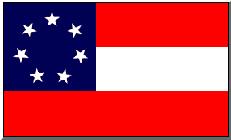
The Confederate State of America is open for business when the Provisional Congress convenes in Montgomery, Alabama.
The official record read: "Be it remembered that on the fourth day of February, in the year of our Lord, one thousand eight hundred and sixty-one, and in the Capitol of the State of Alabama, in the city of Montgomery, at the hour of noon, there assembled certain deputies and delegates from the several independent South State of North America..."
The first order of business was drafting a constitution. They used the U.S. Constitution as a model, and most of it was taken verbatim. It took just four days to hammer out a tentative document to govern the new nation. The president was limited to one six-year term. Unlike the U.S. Constitution, the word "slave" was used and the institution protected in all states and any territories to be added later. Importation of slaves was prohibited, as this would alienate European nations and would detract from the profitable "internal slave trade" in the South. Other components of the constitution were designed to enhance the power of the states--governmental money for internal improvements was banned and the president was given a line-item veto on appropriations bills.
The Congress then turned its attention to selecting a president. The delegates settled on Jefferson Davis, a West Point graduate who was the U.S. Secretary of War in the 1850s and a senator from Mississippi.

The Confederate State of America is open for business when the Provisional Congress convenes in Montgomery, Alabama.
The official record read: "Be it remembered that on the fourth day of February, in the year of our Lord, one thousand eight hundred and sixty-one, and in the Capitol of the State of Alabama, in the city of Montgomery, at the hour of noon, there assembled certain deputies and delegates from the several independent South State of North America..."
The first order of business was drafting a constitution. They used the U.S. Constitution as a model, and most of it was taken verbatim. It took just four days to hammer out a tentative document to govern the new nation. The president was limited to one six-year term. Unlike the U.S. Constitution, the word "slave" was used and the institution protected in all states and any territories to be added later. Importation of slaves was prohibited, as this would alienate European nations and would detract from the profitable "internal slave trade" in the South. Other components of the constitution were designed to enhance the power of the states--governmental money for internal improvements was banned and the president was given a line-item veto on appropriations bills.
The Congress then turned its attention to selecting a president. The delegates settled on Jefferson Davis, a West Point graduate who was the U.S. Secretary of War in the 1850s and a senator from Mississippi.
03 February 2006
Today in Civil War History
1865 Hampton Roads Conference
 William Henry Seward
William Henry Seward
President Lincoln meets with a delegation of Confederate officials to discuss a possible peace agreement. Lincoln refuses to grant the delegation any concessions, and the president departs for the north.
After less than five hours, the conference ended. The war continued for more than two months.
Read more about the Hampton Roads Conference HERE:
 William Henry Seward
William Henry SewardPresident Lincoln meets with a delegation of Confederate officials to discuss a possible peace agreement. Lincoln refuses to grant the delegation any concessions, and the president departs for the north.
After less than five hours, the conference ended. The war continued for more than two months.
Read more about the Hampton Roads Conference HERE:
02 February 2006
Today in Civil War History
1803 Albert Sidney Johnston born
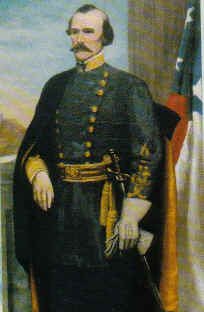
Confederate General Albert Sidney Johnston is born in Washington, Kentucky. Johnston was considered one of the best Confederate commanders until he was killed at Shiloh, the first major engagement in the west.
Johnston and Union General James McPherson were the only two army commanders killed in action during the Civil War. Johnston's death left a void in the leadership of the western armies that was never effectively filled.

Confederate General Albert Sidney Johnston is born in Washington, Kentucky. Johnston was considered one of the best Confederate commanders until he was killed at Shiloh, the first major engagement in the west.
Johnston and Union General James McPherson were the only two army commanders killed in action during the Civil War. Johnston's death left a void in the leadership of the western armies that was never effectively filled.
01 February 2006
Today in Civil War History
1861 Texas secedes
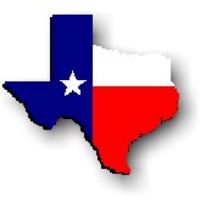
Texas becomes the seventh state to secede from the Union when a state convention votes 166 to 8 in favor of the measure.
The Texans who voted to leave the Union did so over the objections of their governor, Sam Houston. The hero of the Texas War for Independence was in his third term as the state's chief executive; a staunch Unionist, his election seemed to indicate that Texas did not share the rising secessionist sentiments of the other southern states.

Texas becomes the seventh state to secede from the Union when a state convention votes 166 to 8 in favor of the measure.
The Texans who voted to leave the Union did so over the objections of their governor, Sam Houston. The hero of the Texas War for Independence was in his third term as the state's chief executive; a staunch Unionist, his election seemed to indicate that Texas did not share the rising secessionist sentiments of the other southern states.
